#from the time of the Romans. They also have a photo gallery of famous people who have stayed in the rooms throughout history. In the hall t
Text





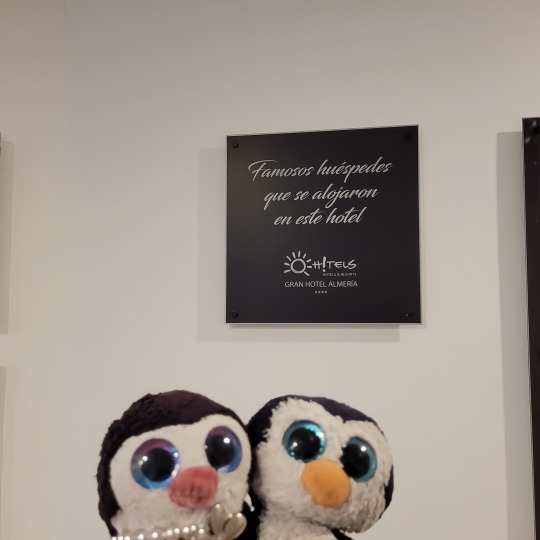


2022/12/09
Al día siguiente dimos una vuelta por el interior del hotel. Hay algunos jarrones muy antiguos, de época de los romanos. También tienen una galería de fotografías de personas famosas que se han alojado en las habitaciones a lo largo de la historia. En el vestíbulo había un árbol de navidad y una bonita lámpara.
The next day we took a tour inside the hotel. There are some very old vases, from the time of the Romans. They also have a photo gallery of famous people who have stayed in the rooms throughout history. In the hall there was a Christmas tree and a nice lamp.
Google translation into Italian:
Il giorno successivo abbiamo fatto un giro all'interno dell'hotel. Ci sono dei vasi molto antichi, del tempo dei romani. Hanno anche una galleria fotografica di personaggi famosi che hanno soggiornato nelle camere nel corso della storia. Nell'ingresso c'era un albero di Natale e una bella lampada.
Google Translation into Portuguese:
No dia seguinte fizemos um tour dentro do hotel. Existem alguns vasos muito antigos, do tempo dos romanos. Eles também têm uma galeria de fotos de pessoas famosas que se hospedaram nos quartos ao longo da história. No corredor havia uma árvore de Natal e uma bela lâmpada.
Google Translation into French:
Le lendemain, nous avons fait un tour à l'intérieur de l'hôtel. Il y a des vases très anciens, du temps des Romains. Ils ont également une galerie de photos de personnages célèbres qui ont séjourné dans les chambres à travers l'histoire. Dans le hall, il y avait un sapin de Noël et une belle lampe.
Google Translation into Arabic:
في اليوم التالي قمنا بجولة داخل الفندق. هناك مزهريات قديمة جدا من زمن الرومان. لديهم أيضًا معرض صور لأشخاص مشهورين أقاموا في الغرف عبر التاريخ. في القاعة كان هناك شجرة عيد الميلاد ومصباح جميل.
Google Translation into German:
Am nächsten Tag machten wir eine Führung durch das Hotel. Es gibt sehr alte Vasen, aus der Zeit der Römer. Sie haben auch eine Fotogalerie berühmter Persönlichkeiten, die im Laufe der Geschichte in den Zimmern übernachtet haben. In der Halle gab es einen Weihnachtsbaum und eine schöne Lampe.
Google Translation into Albanisch:
Të nesërmen bëmë një vizitë në hotel. Ka vazo shumë të vjetra, të kohës romake. Ata gjithashtu kanë një galeri fotografish të njerëzve të famshëm që kanë qëndruar në dhoma gjatë historisë. Në sallë kishte një pemë të Krishtlindjes dhe një llambë të bukur.
Google Translation into Armenian:
Հաջորդ օրը շրջայց կատարեցինք հյուրանոցում։ Կան շատ հին ծաղկամաններ՝ հռոմեական ժամանակներից։ Նրանք նաև ունեն հայտնի մարդկանց լուսանկարների պատկերասրահ, ովքեր մնացել են սենյակներում պատմության ընթացքում: Սրահում տոնածառ էր ու գեղեցիկ ճրագ։
Google Translation into Bulgarian:
На следващия ден направихме обиколка на хотела. Има много стари вази, от римско време. Имат и галерия от снимки на известни хора, които са отсядали в стаите през цялата история. В залата имаше коледна елха и красива лампа.
Google Translation into Czech:
Druhý den jsme absolvovali prohlídku hotelu. Jsou zde velmi staré vázy z římských dob. Mají také fotogalerii slavných lidí, kteří v pokojích pobývali v průběhu historie. V hale byl vánoční strom a krásná lampa.
Google Translation into Slovak:
Na druhý deň sme absolvovali prehliadku hotela. Sú tu veľmi staré vázy z rímskych čias. Majú tiež fotogalériu slávnych ľudí, ktorí zostali v izbách počas histórie. V hale bol vianočný stromček a krásna lampa.
Google Translation into Slovenian:
Naslednji dan smo si ogledali hotel. Obstajajo zelo stare vaze, še iz rimskih časov. Imajo tudi fotogalerijo znanih ljudi, ki so skozi zgodovino bivali v sobah. V dvorani je bilo božično drevo in čudovita lučka.
Google Translation into Estonian:
Järgmisel päeval tegime hotellis ringkäigu. Seal on väga vanad vaasid, Rooma ajast. Neil on ka fotogalerii kuulsatest inimestest, kes on läbi ajaloo tubades ööbinud. Saalis oli jõulupuu ja ilus lamp.
Google Translation into Suomi:
Seuraavana päivänä kävimme tutustumassa hotelliin. Siellä on hyvin vanhoja maljakoita Rooman ajoilta. Heillä on myös kuvagalleria kuuluisista ihmisistä, jotka ovat asuneet huoneissa läpi historian. Aulassa oli joulukuusi ja kaunis lamppu.
Google Translation into Greek:
Την επόμενη μέρα ξεναγηθήκαμε στο ξενοδοχείο. Υπάρχουν πολύ παλιά αγγεία, ρωμαϊκών χρόνων. Έχουν επίσης μια συλλογή φωτογραφιών με διάσημους ανθρώπους που έχουν μείνει στα δωμάτια σε όλη την ιστορία. Στην αίθουσα υπήρχε ένα χριστουγεννιάτικο δέντρο και ένα όμορφο φωτιστικό.
Google Translation into Dutch:
De volgende dag hebben we een rondleiding door het hotel gemaakt. Er staan heel oude vazen, uit de Romeinse tijd. Ze hebben ook een fotogalerij van beroemde mensen die door de geschiedenis heen in de kamers hebben verbleven. In de hal stond een kerstboom en een mooie lamp.
Google Translation into Norwegian:
Dagen etter tok vi en omvisning på hotellet. Det er veldig gamle vaser, fra romertiden. De har også et bildegalleri av kjente personer som har bodd på rommene gjennom historien. I salen var det juletre og en vakker lampe.
Google Translation into Polish:
Następnego dnia wybraliśmy się na zwiedzanie hotelu. Znajdują się tam bardzo stare wazy, pochodzące z czasów rzymskich. Mają też galerię zdjęć znanych osób, które przebywały w pokojach na przestrzeni dziejów. W przedpokoju stała choinka i piękna lampka.
Google Translation into Romanian:
A doua zi am facut un tur al hotelului. Sunt vaze foarte vechi, de pe vremea romanilor. De asemenea, au o galerie foto cu oameni celebri care au stat în camere de-a lungul istoriei. În hol era un pom de Crăciun și o lampă frumoasă.
Google Translation into Russian:
На следующий день у нас была экскурсия по отелю. Есть очень старые вазы, с римских времен. У них также есть фотогалерея известных людей, которые останавливались в номерах на протяжении всей истории. В зале стояла елка и красивый светильник.
Google Translation into Serbian:
Следећег дана смо кренули у обилазак хотела. Постоје веома старе вазе, из римског доба. Имају и фотогалерију познатих људи који су кроз историју боравили у собама. У сали је била јелка и лепа лампа.
Google Translation into Swedish:
Dagen efter tog vi en rundtur på hotellet. Det finns mycket gamla vaser, från romartiden. De har också ett fotogalleri med kända personer som har bott i rummen genom historien. I hallen fanns en julgran och en vacker lampa.
Google Translation into Turkish:
Ertesi gün otel turu yaptık. Roma döneminden kalma çok eski vazolar var. Ayrıca tarih boyunca odalarda konaklamış ünlü kişilerin fotoğraf galerisi de bulunmaktadır. Salonda bir Noel ağacı ve güzel bir lamba vardı.
Google Translation into Ukrainian:
Наступного дня ми зробили екскурсію по готелі. Є дуже старі вази, ще з римських часів. У них також є фотогалерея відомих людей, які залишалися в кімнатах протягом всієї історії. У залі стояла ялинка і гарний світильник.
Google Translation into Bengali:
পরের দিন আমরা হোটেলে ঘুরে এলাম। রোমান সময় থেকে খুব পুরানো ফুলদানি আছে. তাদের কাছে বিখ্যাত ব্যক্তিদের একটি ফটো গ্যালারিও রয়েছে যারা ইতিহাস জুড়ে কক্ষে থেকেছেন। হলটিতে একটি ক্রিসমাস ট্রি এবং একটি সুন্দর বাতি ছিল।
Google Translation into Chinese:
第二天我们参观了酒店。 有非常古老的花瓶,来自罗马时代。 他们还有一个照片库,展示了历史上曾入住过这些房间的名人。 大厅里有一棵圣诞树和一盏漂亮的灯。
Google Translation into Korean:
다음날 우리는 호텔 투어를 했다. 로마 시대의 아주 오래된 꽃병이 있습니다. 그들은 또한 역사적으로 객실에 머물렀던 유명한 사람들의 사진 갤러리를 가지고 있습니다. 홀에는 크리스마스 트리와 아름다운 램프가 있었습니다.
Google Translation into Hebrew:
למחרת עשינו סיור במלון. יש אגרטלים ישנים מאוד, מהתקופה הרומית. יש להם גם גלריית תמונות של אנשים מפורסמים ששהו בחדרים לאורך ההיסטוריה. באולם היה עץ חג המולד ומנורה יפה.
Google Translation into Hindi:
अगले दिन हमने होटल का भ्रमण किया। रोमन काल के बहुत पुराने फूलदान हैं। उनके पास प्रसिद्ध लोगों की एक फोटो गैलरी भी है जो पूरे इतिहास में कमरों में रहे हैं। हॉल में एक क्रिसमस ट्री और एक खूबसूरत लैम्प था।
Google Translation into Indonesian:
Hari berikutnya kami melakukan tur hotel. Ada vas yang sangat tua, dari zaman Romawi. Mereka juga memiliki galeri foto orang-orang terkenal yang pernah tinggal di kamar sepanjang sejarah. Di aula ada pohon Natal dan lampu yang indah.
Google Translation into Japanese:
翌日、ホテルのツアーに参加しました。 ローマ時代からの非常に古い花瓶があります。 また、歴代の宿泊者の写真ギャラリーもあります。 ホールにはクリスマスツリーと美しいランプがありました。
Google Translation into Malay:
Keesokan harinya kami melawat hotel. Terdapat pasu yang sangat lama, dari zaman Rom. Mereka juga mempunyai galeri foto orang terkenal yang telah tinggal di bilik sepanjang sejarah. Di dalam dewan terdapat pokok Krismas dan lampu yang cantik.
Google Translation into Panjabi:
ਅਗਲੇ ਦਿਨ ਅਸੀਂ ਹੋਟਲ ਦੀ ਸੈਰ ਕੀਤੀ। ਇੱਥੇ ਬਹੁਤ ਪੁਰਾਣੇ ਫੁੱਲਦਾਨ ਹਨ, ਰੋਮਨ ਸਮੇਂ ਤੋਂ. ਉਨ੍ਹਾਂ ਕੋਲ ਮਸ਼ਹੂਰ ਲੋਕਾਂ ਦੀ ਫੋਟੋ ਗੈਲਰੀ ਵੀ ਹੈ ਜੋ ਇਤਿਹਾਸ ਦੌਰਾਨ ਕਮਰਿਆਂ ਵਿੱਚ ਰਹੇ ਹਨ। ਹਾਲ ਵਿੱਚ ਇੱਕ ਕ੍ਰਿਸਮਸ ਟ੍ਰੀ ਅਤੇ ਇੱਕ ਸੁੰਦਰ ਲੈਂਪ ਸੀ।
Google Translation into Pashtun:
بله ورځ مو د هوټل څخه لیدنه وکړه. د رومن وخت څخه ډیر زاړه ګلدانونه شتون لري. دوی د مشهور خلکو عکس ګالري هم لري چې د تاریخ په اوږدو کې په خونو کې پاتې شوي. په تالار کې د کرسمس ونه او یو ښکلی څراغ و.
Google Translation into Persian:
روز بعد گشتی در هتل زدیم. گلدان های بسیار قدیمی، مربوط به دوران رومیان وجود دارد. آنها همچنین یک گالری عکس از افراد مشهوری دارند که در طول تاریخ در اتاق ها اقامت داشته اند. در سالن یک درخت کریسمس و یک چراغ زیبا وجود داشت.
Google Translation into Tagalog:
Kinabukasan ay naglibot kami sa hotel. May mga napakatandang plorera, mula sa panahon ng Romano. Mayroon din silang photo gallery ng mga sikat na tao na nanatili sa mga kuwarto sa buong kasaysayan. Sa bulwagan ay may isang Christmas tree at isang magandang lampara.
Google Translation into Thai:
วันต่อมาเราพาชมโรงแรม มีแจกันเก่าแก่ตั้งแต่สมัยโรมัน พวกเขายังมีแกลเลอรีรูปภาพของบุคคลที่มีชื่อเสียงที่เคยอยู่ในห้องตลอดประวัติศาสตร์ ในห้องโถงมีต้นคริสต์มาสและโคมไฟที่สวยงาม
Google Translation into Urdu:
اگلے دن ہم نے ہوٹل کی سیر کی۔ بہت پرانے گلدان ہیں، رومن دور سے۔ ان کے پاس مشہور لوگوں کی فوٹو گیلری بھی ہے جو پوری تاریخ میں کمروں میں رہ چکے ہیں۔ ہال میں ایک کرسمس ٹری اور ایک خوبصورت لیمپ تھا۔
#2022/12/09#Al día siguiente dimos una vuelta por el interior del hotel. Hay algunos jarrones muy antiguos#de época de los romanos. También tienen una galería de fotografías de personas famosas que se han alojado en las habitaciones a lo largo de#The next day we took a tour inside the hotel. There are some very old vases#from the time of the Romans. They also have a photo gallery of famous people who have stayed in the rooms throughout history. In the hall t#Google translation into Italian:#Il giorno successivo abbiamo fatto un giro all'interno dell'hotel. Ci sono dei vasi molto antichi#del tempo dei romani. Hanno anche una galleria fotografica di personaggi famosi che hanno soggiornato nelle camere nel corso della storia.#Google Translation into Portuguese:#No dia seguinte fizemos um tour dentro do hotel. Existem alguns vasos muito antigos#do tempo dos romanos. Eles também têm uma galeria de fotos de pessoas famosas que se hospedaram nos quartos ao longo da história. No corred#Google Translation into French:#Le lendemain#nous avons fait un tour à l'intérieur de l'hôtel. Il y a des vases très anciens#du temps des Romains. Ils ont également une galerie de photos de personnages célèbres qui ont séjourné dans les chambres à travers l'histoi#il y avait un sapin de Noël et une belle lampe.#Google Translation into Arabic:#في اليوم التالي قمنا بجولة داخل الفندق. هناك مزهريات قديمة جدا من زمن الرومان. لديهم أيضًا معرض صور لأشخاص مشهورين أقاموا في الغرف عبر ال#Google Translation into German:#Am nächsten Tag machten wir eine Führung durch das Hotel. Es gibt sehr alte Vasen#aus der Zeit der Römer. Sie haben auch eine Fotogalerie berühmter Persönlichkeiten#die im Laufe der Geschichte in den Zimmern übernachtet haben. In der Halle gab es einen Weihnachtsbaum und eine schöne Lampe.#Google Translation into Albanisch:#Të nesërmen bëmë një vizitë në hotel. Ka vazo shumë të vjetra#të kohës romake. Ata gjithashtu kanë një galeri fotografish të njerëzve të famshëm që kanë qëndruar në dhoma gjatë historisë. Në sallë kish#Google Translation into Armenian:#Հաջորդ օրը շրջայց կատարեցինք հյուրանոցում։ Կան շատ հին ծաղկամաններ՝ հռոմեական ժամանակներից։ Նրանք նաև ունեն հայտնի մարդկանց լուսանկա#ովքեր մնացել են սենյակներում պատմության ընթացքում: Սրահում տոնածառ էր ու գեղեցիկ ճրագ։#Google Translation into Bulgarian:#На следващия ден направихме обиколка на хотела. Има много стари вази
4 notes
·
View notes
Text
Discover the Wonders of Sightseeing in London, UK

London, UK is one of the best-known cities in the world. The city is diverse and full of history that you can experience firsthand. From ancient Roman walls to modern attractions like The Shard, there are plenty of sites to explore in London.
Locals and tourists alike can take in a show at the West End Theatre or marvel at Big Ben and St. Paul's Cathedral.
Shopping on Oxford Street or Covent Garden Market will provide endless opportunities for souvenirs, while traditional pubs offer a taste of British culture with their delicious food and drinks. Enjoy an afternoon tea or simply sit back and admire the beauty that London has to offer.
It is impossible to really appreciate London in one visit as there is just so much to do and discover. Planning out the best use of time has long been a challenge for everyone.
Sightseeing in London
London, UK has been a hotspot for sightseeing since Tudor times. The city started to become a key tourist destination in the late 18th century and it has continued to draw in people keen to take in its landmarks and ancient streets ever since.
London is full of history, with such well-known sights as Buckingham Palace, Big Ben, Tower Bridge, Greenwich and Trafalgar Square. Many of these have now become popular attractions for tourists from all around the world.
London's rich past means that nearly every corner you turn presents another historically significant viewpoint, making it perfect for those looking for an informative yet entertaining tour.
London boasts many hidden gems tucked away within its bustling cityscape but provides no shortage of exciting attractions for visitors of all ages and interests.
From national art galleries to royal parks, theatres, and markets, London is truly a sightseer’s paradise!
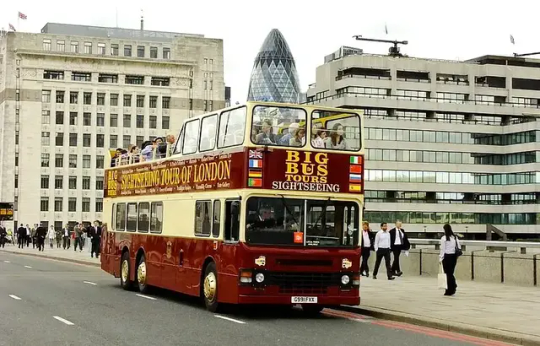
The big bus tours on London Bridge. Photo by Martin Arrand. Flickr.
Guided Tours by Bus
London is a vast city with many attractions and landmarks, but it can be hard to see them all without a guide. A guided tour by bus gives visitors the opportunity to explore London’s famous sights in comfort while learning more about its history.
The buses used for these tours are classic double-deckers, giving participants an authentic experience of travelling around the capital as locals do. Tour guides provide commentary along the way and share interesting stories from London’s past - perfect for those looking to understand more about this vibrant city.
These tours take in some of London’s best known monuments such as the Tower of London and Big Ben, plus other hidden gems that you might have missed if visiting independently.

Trafalgar Square, London, UK. Photo by John Weiss. Flickr.
Trafalgar Square
One of London's best known landmarks, Trafalgar Square, is a vibrant public space found in the heart of the city. It has been used for numerous events throughout history, and holds an important place in British culture.
Located just a few minutes' walk from the National Gallery and other popular attractions, it's worth visiting to experience its unique atmosphere for yourself.
The square was named after Admiral Horatio Nelson's victory at the Battle of Trafalgar in 1805. Its centrepiece is Nelson’s Column – a monument to Admiral Nelson which stands 55m tall and is guarded by four lion statues crafted from granite.
The Square also boasts two fountains, as well as plinths dedicated to Charlie Chaplin and Abraham Lincoln.
The London Underground
For millions of commuters and visitors alike, the London Underground is an important part of British life. The fastest and easiest way to get around such a large city. However, what many people do not know is that the history of this transport network stretches back over 150 years.
The world’s first underground railway opened in 1863 between Paddington Station and Farringdon Street - now known as the Metropolitan Line. This was soon followed by lines stretching to Bank, Charing Cross and Moorgate. By 1884, most of the famous ‘Circle’ line had been constructed, and by 1890 it ran a full circuit around Central London – marking a major milestone in railway engineering and urban planning.
Since then, new lines have been added throughout London including some modern adoptions such as the Jubilee line in 1979 and three additional lines running through East London.

Shakespear's Globe Theatre on the the south bank of the River Thames. Photo by Paulo O. Flickr.
Ancient Sites
London's River Thames is home to some of history's greatest sites. From the Roman walls on the south bank, dating back as far as 200 AD and once protecting the entire city, to the famous Globe Theatre where some of William Shakespeare's most remarkable plays were performed in the 16th century, there is no shortage of majestic sights.
Finally, stepping into the Tower of London transports you back centuries. Approaching 1,000 years old, this castle has been variously used as a royal residence due to its legendary walls but also served archival and treasury duties until 1828 when it was converted into a museum.
Today these ancient sites, only meters from each other on the Londons River Thames, are must-see places and provide a unique glimpse into how far this city's legacy has come.
Modern Attractions
The London Eye
A popular modern attraction for visitors and tourists alike is the London Eye. Situated right on the banks of the River Thames, the structure stands a mighty 443 feet tall and is the largest cantilevered observation wheel in the world.
It offers stunning views over the city that have been enjoyed by an estimated 3.5 million people since its opening back in 2000. Featuring 32 capsules, each containing 25 guests, the London Eye makes for a breathtaking experience that is not to be missed when visiting London!

The Shard, Boiler Suit. Photo by Gordon Joly. Flickr.
The Shard
One of its most recent additions, The Shard, has quickly become one of London's most popular tourist destinations. Standing 306 meters tall, it is currently the tallest building in London and one of the tallest in Europe.
The Shard was designed by award-winning Italian architect Renzo Piano and opened its doors to visitors in 2013. Its unique design includes 11000 panels of glass which gives panoramic views across London from the viewing platform on level 72.
It also houses offices, restaurant floors, a hotel as well as an open-air sky deck on level 69 with breathtaking views over some of London's most famous landmarks such as Tower Bridge and St Paul’s Cathedral.
Tate Modern
The Tate Modern is an incredibly popular destination that is full of recent visual arts. It houses an impressive variety of artwork ranging from painting and sculpture to photography, film, and performance art.
The building opened its doors in 2000 as a renovated power station, befittingly making it the perfect setting to showcase modern works of art by both renowned and up-and-coming artists.
There is always something new to see at the gallery, with close to 5 million tourists per year visiting, it's no surprise that the Tate Modern continues to leave an indelible mark on tourists, art lovers, and locals alike.

Theatre Royal, Drury Lane. Photo by David Blaikie. Flickr.
West End Theatres
The theater scene in the West End is lively and invigorating, making for an exciting and memorable destination. From old-style musicals to contemporary shows, theater venues in the neighborhood consistently offer an exciting and entertaining experience.
Whether it’s ‘The Phantom of the Opera’ or ‘Les Miserables’ you can always find something new and entertaining to watch in the West End. If you want to get up close and personal with your favorite stars many shows also offer meet-and-greets after performances!
Shopping Destinations
Oxford Street is one of the most visited shopping destinations in London, UK, and for good reason. Stretching from Marble Arch to Tottenham Court Road, Oxford Street offers a myriad of stores ranging from high-street fashion to designer labels.
Stop by Covent Garden Market for unique crafts and handmade items; this covered market has over 60 stalls offering art, jewelry, comics, and antiques.
Whether you’re looking to spot celebrity shoppers in Knightsbridge or pick up a special souvenir from the Covent Garden Market vendors, shopping in London has no shortage of options.
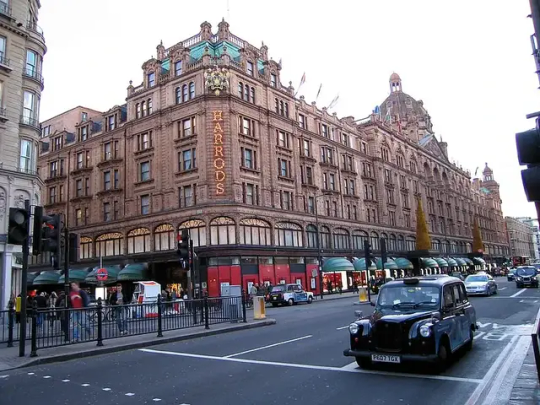
Harrods, Knightsbridge in London UK. Photo by Rohan Travellin. Flickr.
Harrods
Harrods is one of the best known department stores in the world. Established in 1834, this London-based store has been a cornerstone of high-end shopping for nearly two centuries. Known for its opulence and grandiose displays of luxury items, it has become an international symbol of class and style.
The origin story of Harrods began with Charles Henry Harrod, a young entrepreneur from Kent who opened his first “East India Merchant” shop near London Bridge in 1834. By 1880, the business had grown substantially and moved to its current location on Brompton Road in Knightsbridge.
From there, it quickly established itself as the go-to destination for those seeking luxury goods, catering to members of Britain’s royal family and even foreign dignitaries like Tsar Nicholas II of Russia.
Harvey Nichols
Harvey Nichols is one of the most well-known luxury department stores in the world. Founded in London in 1831, it has been an established source of high-end fashion, beauty and lifestyle products for almost two centuries.
The brand was started by Benjamin Harvey who opened his first store on London’s fashionable Knightsbridge Street with a focus on selling quality items such as ribbons, hosiery and other accessories to the affluent people of 19th century England.
Over time, this evolved into what we now know as Harvey Nichols – a premier destination for cutting edge fashion trends, exclusive beauty products and gourmet food items from around the globe.
John Lewis & Partners
John Lewis & Partners is a British department store, renowned for providing quality and stylish products. Established in 1864 by John Spedan Lewis, this beloved retail institution has grown from humble beginnings to become one of the most recognizable names in the UK.
John Spedan Lewis opened his first shop on Oxford Street in London, selling an array of goods ranging from haberdashery to furniture.
Throughout the years, he continued to expand both his product range and customer base, eventually establishing a successful business which was passed down through generations of the Lewis family.
In 2009, John Lewis & Partners adopted its current name as a nod to its heritage and founder’s vision.
Today, John Lewis & Partners serves customers across the nation with more than 50 stores ranging from fashion boutiques to state-of-the-art home furnishing showrooms.
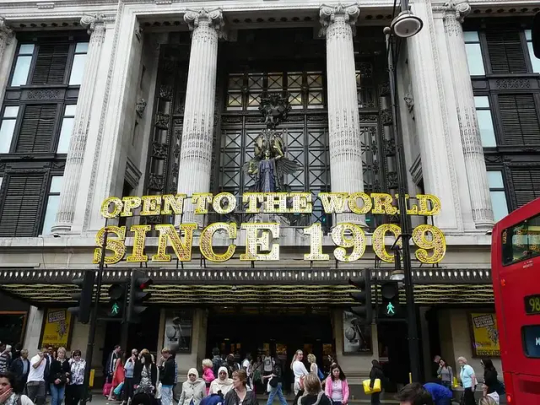
Selfridges, London, UK. Photo by Loz Pycock. Flickr.
Selfridges
Selfridges has been a staple of the London shopping scene since its opening in 1909. Founded by American entrepreneur Harry Gordon Selfridge, the store was one of the first to offer customers an innovative shopping experience, with a focus on customer service and marketing.
Selfridge used his wealth and experience to modernise traditional British retailing, introducing attractive window displays and interactive areas for shoppers. He also revolutionised the way goods were sold, offering customers competitive prices and allowing them to view merchandise before purchasing it.
His pioneering approach helped establish Selfridges as a leader in retailing at the time, setting it apart from other stores selling similar wares.
Today, Selfridges is still regarded as one of London's top shopping destinations for fashion-lovers and trendsetters alike.
Hamleys
Hamleys is a name synonymous with toys and fun. Established in 1760, it is one of the oldest toy shops in the world, with a rich history spanning over 250 years. Its story began when William Hamley opened his first shop on High Holborn Street in London, which soon became renowned for its large selection of toys.
Through its long tenure, Hamleys has made many contributions to both the world of toys and entertainment as well as British culture. During the 1800s, Prince Albert visited the store to purchase gifts for his children; Queen Victoria even sent her royal warrant to Hamleys for it to become a royal purveyor of toys.
Even today, it remains one of the most famous toy stores in Britain and beyond – attracting more than 5 million visitors each year from around the world.

St Paul's Cathedral, London. Photo by Garry Knight. Flickr.
Architectural Wonders
London, UK is home to some of the world's most beautiful architectural wonders. Big Ben and St. Paul's Cathedral are two of them, both situated in central London.
Big Ben is a tall historical clock tower that has roots reaching back to 1858. The 276-foot tower houses a working four-faced clock as well as a bell that is over 17 tons in weight and can be heard from up to three miles away.
Similarly, St. Paul's Cathedral is considered one of London’s symbolic landmarks after it survived the German bombing during World War Two. The cathedral was built approx 300 years ago by the English architect Sir Christopher Wren. It is located close to the Bank of England.
The cathedral is full of history and has an opulent interior with bronze doors, leather carvings, and marble walls. The whispering gallery is a must-see experience.
Food & Drinks
London has a long and proud history of traditional pubs and afternoon tea. For centuries, the two have been enjoyed by locals and visitors alike, adding to the city's vibrant culture.
Whether you're looking for an evening of drinks with friends or an afternoon snack in a quaint setting, London has plenty of options when it comes to food and drinks.
Traditional pubs are a staple in London culture, offering delicious pub grub along with a wide selection of beers, wines, and spirits. With some having been around since the 16th century, these pubs provide an authentic atmosphere where guests can take part in longstanding traditions such as darts tournaments or karaoke nights.
On the other hand, afternoons spent at one of many quaint tearooms provide visitors with a warm welcome as well as scones, finger sandwiches, and plenty of refreshing teas.
Fortnum and Mason
Fortnum & Mason is a world-renowned luxury department store located in the heart of London. Founded in 1707 by William Fortnum and Hugh Mason, it has been providing its customers with a unique shopping experience for over 300 years.
The store originally opened as a grocery shop, but quickly expanded to include other items such as artworks, antiques and fine foods.
Fortnum & Mason has become renowned throughout the world for its luxurious products and exceptional service standards. It boasts an extensive range of food and drink, fashion, homeware and accessories including exclusive fine wines and premium teas - making it one of London’s most celebrated stores.
On top of the traditional retailing activities, Fortnum & Mason hosts afternoon tea sets as well as special events such as live music performances that attract visitors from around the world.
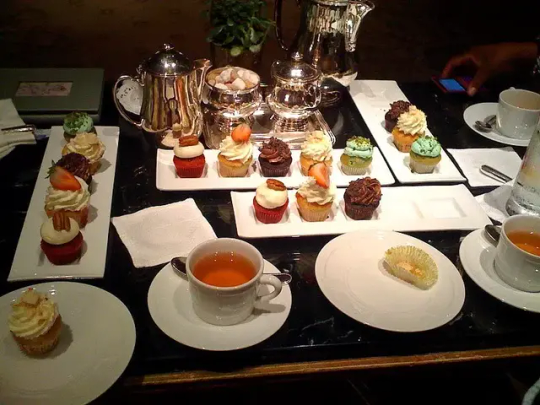
Ritz-Carlton cupcake tea. Photo by Rachel Kramer Bussel. Flickr.
Tea at the Ritz
The Ritz: the name alone is synonymous with luxury and elegance. This London institution has been serving up afternoon tea since 1906, making it one of the longest-running traditions in history.
The British love affair with tea dates back to the 17th century when it was first imported from China. By the 18th century, taking tea had evolved into an essential part of social life for aristocrats who would often gather in genteel parlors to enjoy this fashionable beverage.
Fast forward to 1906 and The Ritz opened its doors, introducing a new type of Afternoon Tea experience that has gone on to become a timeless classic.
Conclusion: Enjoy the Magic of London
London is a city full of wonders, from its architectural marvels to the traditional pubs and afternoon tea. Tourists can experience something new each time they visit this vibrant destination.
Whether it’s strolling down Oxford Street for some shopping or admiring the breathtaking beauty of Big Ben and St Paul's Cathedral, London is a cultural experience like no other.
London is also up-to-date with modern marvels like The London Eye, The Shard and Tate Modern. so if you're looking for history, art and entertainment, this vibrant city will not disappoint!
Sources: THX News, Timeout & Visit London.
Read the full article
#Hamleys#Harrods#HarveyNichols#London#LondonUK#Selfridges#SightseeinginLondon#TateModern#TeaattheRitz#TheLondonEye#TheLondonUnderground#TheShard#TrafalgarSquare#WestEndTheatres
0 notes
Text
Twisted Wonderland: Headcanons for Dorm Haunted Houses Pt.7 - Pomefiore
MASTERLIST
Part 6
Warning! A slight spoiler from Twisted Wonderland Ch. 5.
youtube
youtube
THE ATTRACTION:
This dorm, out of all others, is the most AESTHETIC haunted house anyone had ever seen.
And of course, they go for the vampire theme, because... DUH.
It’s a masquerade vampire museum theme.
They all wore elegant haute couture costumes based on Parisian evening wear and masks made out of gold-encrusted embroidery and diamond crystals. EXPENSIVE AF.
They were also the only dorm to have pre-show photo sessions with the staff and Vil before their haunted house event starts. Days before they opened their haunted house attraction, Vil marketed his team with an exclusive fan autograph and photo signing event to boost the popularity of their dorm’s haunted house. They have tickets for each type of signings, and the Deluxe Golden Ticket allows guests to take a signed picture with Vil and Rook.
Beside the standard merchandise, Pomefiore created a special photobook centered on the main “vampires” of the dorm. Vil had to interfere when Pomefiore students got into a huge fight over who gets the most highlight in the photobook - the dorm leader already got dibs on the centrefold.
Yes, it does sell like hotcakes.
Vil made ten girls faint when he does a little fanservice for them. Like, licking his bloodied lips - exposing his fangs, or blowing a kiss at them during the pre-event signing.
EPEL JUST CRINGED.
This is the reason why Epel refused to participate as an actor. He’d rather risk his life than to, as he put it:
“I’m not whoring myself out and I refused to be dolled up like a prostitute.” Epel, PLEASE.
He had to fight Vil for it, but after one compromise from Rook, Vil relents. He already got a vampire costume for Epel.
Finding Pomefiore’s haunted house is not that hard (aside from the screaming and giggling fangirls). They just have to follow the search lights from the distance, when they came across a Greco-Roman museum having their premiere night out.
Plastered on the front of the haunted house is Vil posing elegantly with his fangs out, drinking a drink that resembled blood. For fanservice reasons, Rook had rested his head onto Vil’s lap, the chisel that he showed is stained with clay and blood. The group immediately guessed correctly what their theme is.
“Vampires, huh?” MC slowly raised a wooden stake and a hammer that they had prepared earlier just for this haunted house.
Ace won’t lose. He brought out garlic. Jack immediately leaped ten feet away from him - dogs can’t eat garlic too, Ace.
“GUYS, They’re not real.” Deuce slapped his forehead.
“Who said that one of them MIGHT not be real?!” Grim fashioned a cross made of sticks, something that his brain cell had thought for the first time in forever.
Epel just… grabbed a handful of herbs: parsley, sage, rosemary and thyme, “Meemaw said these little things can protect us from evil spirits!”
“Epel, this is a haunted house, not a cooking show. Get your act together.”
In the first act, guests went inside an elegant greco-roman museum where several handsome vampires greeted the guests - it’s the opening night for Rook’s sculpture exhibition. They came across a main gallery of elegant gold, red, purple, black and marbled interior aesthetic. On the side, guests could see that while some food is lavishly decorated, the wines are pungent with dripping red blood…
Sometimes they could see scare actors acting like vampires - either they bite guests sensually fun fact: this dorm had received numerous mail of willing female volunteers as scare actors willing to be bitten by or given a chance to bite these pretty boys or they can also witnessed screaming victims being mauled by a group of vampires behind the curtains. It’s not pretty.
When guests entered the art section, the paintings changed from something beautiful to grotesque. Just like the changing paintings in Disney’s Haunted Mansion. Grimm is seriously creeped out when a painting of a beautiful woman turned into a monstrous medusa.
Sometimes ‘vampire’ and ‘painting monster’ actors would jump out from the painting itself, so be careful with paintings that stayed still!
That goes the same with statues too. Scared the living daylights out of MC’s group.
The last stage of the haunted dorm are the halls of mirrors that lead them to a giant ballroom where Vil sat on the throne made of gold. Preserved corpses of his “pretty” victims were left hanging up on the ceilings. A large decayed painting of Vil is looming behind the throne, constantly changing from young Vil to a decayed corpse.
Don’t be fooled by the mirrors. If you approach one of the mirrors, a “monster” will come out bursting from it.
Vil’s vampire costume is “OH NO, HE’S HOT!” personified. Elegant cape, flawless make and those luscious lips with fangs that seemed to invite everybody…
As Azul said, screams of awe (translation: squealing) is also counted.
Vil beckoned his visitors to come closer. One girl immediately ripped off a piece of her clothing, exposing her shoulders and shouting “Take me! I’m YOURS!” at Vil.
Oh, Vil does not just stop there. He will pick a “victim” out of these guests or participants, then “bite” them, earning more screams. One of his “victims” fainted from too much excitement and had to be carried out on a stretcher.
youtube
youtube
THE MISSION:
According to the lore, this art gallery was once a mausoleum for all of the deceased nobilities. Strangely, the poor gravekeepers that survived their nights there mentioned that their corpses seem to stay ‘fresh’, as if they are alive.
One day, a very beautiful man who is known as the Museum Director (“That would be our dear, Roi de Poison,” Rook explained proudly before someone dragged him away from spoiling further) had decided to renovate the mausoleum into an art gallery. Many artists and high-class society considered this place as the number one spot for gaining infamy, parties and connections. However, strange things kept happening - people kept disappearing, statues and paintings that seemed to resemble the missing people and some occasionally, young women and pretty men found with their blood drained in the same area as where the art gallery is.
Their mission is to escape from the mansion and if possible, defeat the heck out of Vil and his minions, ESPECIALLY ROOK.
For the first phase of the mission, they have to enter a special room in a gallery made for the participants to steal the charm inside a small chest box - the workshop of the sculptor himself. The key is left hanging on Rook’s neck.
Someone had to distract Rook while others have to steal the key from Rook’s neck without him noticing - OR ELSE HE’LL CHASE YOU.
This is a mission that requires a lot of teamwork and courage. Why? BECAUSE ROOK IS SCARY AF AND WILL HUNT ANYONE DOWN ONE BY ONE.
Also, these guys will be hit by paralyzing magic for around fifteen minutes, becoming the statue victims to be placed on the gallery.
One last survivor of a group of participants is left alone, crying like a baby as Rook prowls amongst the statues. Even Ace notes that’s very cruel, even for Rook.
“We need someone fast enough to escape and pretty enough for Rook to take notice-” Everybody stared at Epel. That day, Epel swore vengeance on Grimm.
It’s a good thing that Epel is carrying all those “vampire extermination” kits from the group. As Rook madly laughs and sings, ALL COVERED IN FAKE BLOOD, Epel’s heart rate just increased 100x.
Meanwhile, MC’s group had a lot of hard time getting the key from Rook’s neck- he’s just too fast, damn it!
Deuce finally decided on the oldest trick in the book: he tripped Rook. Then they dogpiled on him. MC managed to grab the key, ran all the way to the chest to unlock it, just as soon as Rook managed to escape from their grasp and ran after MC.
“Okay! Now might be the good time for you to take that charm and get out of here… quickly, QUICKLY!” Grimm, your panic attack does not help MC one bit.
MC finally got the charm, hallelujah. They ran out of the room immediately, Rook almost got Ace’s hair. His laugh still rings all across the wall. Epel finally got his vengeance by putting Grimm in a headlock for turning him into bait before MC finally broke them off.
Once they escaped from the gallery, they entered a lab. This is where the REAL mission began.
Now the guide told us that Vil had been sucking up youth from beautiful men and women in his castle. So they were told to prepare a ‘poison’. A ‘poison’ for Vil. A ‘poison’ specifically made to weaken Vil. Vil’s ‘poison’.
Rumor has it that he has a personal painting where the painting of himself ages, and the only way to defeat him is to throw that said potion to that painting.
To get the charm, they have to “recreate” the Queen’s famous “Peddler’s Disguise” potion by adding each ingredient into the cups that are already prepared. Then they have to present it to Vil. Each student must come in one by one just so the others won’t be spoiled.
Getting the ingredients is easier than it’s done. In order to “prepare” it, they must unscrew the taps of each ingredient inside a liquid container.
“I wonder what this one does-” MC unscrews tap - a loud, high-pitched scream blasted right on their face, leaving behind only a shocked MC with their hair standing up. “...well, now, that took ten years of my life.”
Ah, the host also forgot to mention that unscrewing the taps would trigger different scare effects like sudden gas air blown at you, squirted by black ink, high-pitched screams, and crone’s cackles in a sudden manner, so yeah, fuck you, Pomefiore.
Also, the thunderbolts are real, so you get the tingling sensation on your hands aside from the loud thunderous noise and flash of light. MC felt that at least six students had a heart attack on this part. Deuce mentioned that his life flashes before his eyes.
Plenty of students had scrambled out of this task. At least they got the potion ready. Now they just need to splash it at Vil’s painting.
Well, good luck with that. Most girls (or guys) failed this task. Or at least deliberately failed just to get a “bite” from Vil. I mean, have you seen how alluring he is?
It seems that Vil had also sprayed himself with a perfume that would knock all five senses off anyone. Along with a few aphrodisiac essences.
It’s not just Vil they have to worry about. All of the participants have been shrieking to near death when the monsters came out bursting from the glass and took them inside. Jack apologized to one scare actor after he instinctively punched one. Well- so does Ace and Epel, but what do they care?
When they finally reached the throne, they underestimated how incredibly beautiful Vil is. Like, he’s already pretty in everyday life, but now he’s ten thousand times more sexier than they all ever knew - alright, where do all these words come from? Why are they praising this crusty peacock more than they ever did?
Before they knew it, they were already starting to approach Vil unconsciously. He’s charming them with his sweet, sweet words.
Vil seems to be out for MC. First he gave a kiss on the back of their hand before sweeping off their feet in a mock dance. HIS FANS ARE JEALOUS AF.
But then Deuce noticed that when guests and participants came to Vil like moths to a lightbulb, OH MY GREAT SEVEN, JACK IS CARRYING THE POTION VIAL. VIL IS COAXING HIM. HE’S ABOUT TO DROP THE ENTIRE POTION THAT THEY PAIN-STAKINGLY HAD CREATED-
“Do something!” Epel tried to slap some sense to Jack, shouting at both MC and Grimm.
Ok, think. MC needs an idea. Finally, they got one. You know, MC hates to do it, but it’s the only way to distract Vil.
“NEIGE LEBLANCHE IS THE FAIREST OF ALL!” MC cupped their hands and shouted through it.
Well, that did the trick, because Vil seemed to stop in his tracks (if the gasps from onlookers did not count), and did a 180 degree head turn directly at MC.
“What… DID YOU SAY?” Gone is the suave, flirty vampire king Vil - in his stead is a raging, monstrous man with the fury of a thousand rabid peacocks. Welp, MC’s in trouble now.
But it did buy Epel at least a few seconds to splash the “painting” with the “poison”, therefore clearing the last stage.
Once Vil saw they finally did it, he gave out a rave performance of him being vanquished. He disappeared in the smoke.
They don’t know if they should feel glad or not. His fans however… became murderous.
MC’s group had to run away from a horde of angry Vil fans. It took Rook (and Vil) himself a good five minutes to calm them down. By then, MC’s group had already run away.
Vil’s bites are nothing compared to his vicious piranha-like fans, Deuce noted.
In the aftermath of Pomefiore’s haunted house, Epel swore vengeance upon Vil himself. If poison won’t kill him, then throwing him off the cliff during a thunderstorm sounded good as well.
But their feet turned cold and felt all on their faces drained - they just finished Pomefiore. All of the other dorm houses there are just the preparation for an even bigger threat- there is one dorm whose haunted house reportedly to be so horrifying, that during preparation, there are rumors that the prefect had actually summoned REAL monsters to help the dorm to win.
The dreaded haunted house of IGNIHYDE.
#twisted wonderland#disney twst#twst wonderland#disney#headcanon#haunted house headcanon#pomefiore#pomefiore headcanon#epel felmier#rook hunt#vil schoenheit#obon#halloween#halloween headcanon#halloween imagine#haunted house imagine#writing#drabble#mc#yuu#grimm#jack howl#ace trappola#deuce spade#obon headcanon#obon imagine#imagine#disney villains#twisted wonderland headcanon#twisted wonderland imagine
160 notes
·
View notes
Photo

Join us for a virtual tour of Jacques-Louis David Meets Kehinde Wiley! Created by Lisa Small, Senior Curator, European Art, Eugenie Tsai, Senior Curator, Contemporary Art , and Joseph Shaikewitz, Curatorial Assistant, Arts of the Americas and Europe.

The exhibition places two iconic paintings in dialogue: Kehinde Wiley’s Napoleon Leading the Army over the Alps (2005) and its early nineteenth-century source image, Jacques-Louis David’s Bonaparte Crossing the Alps (1800–1) from the Château de Malmaison.
Displayed together for the first time, these two heroic images provide an opportunity to explore how constructions of power, representation, race, masculinity, and agency are enacted within the realm of portraiture.
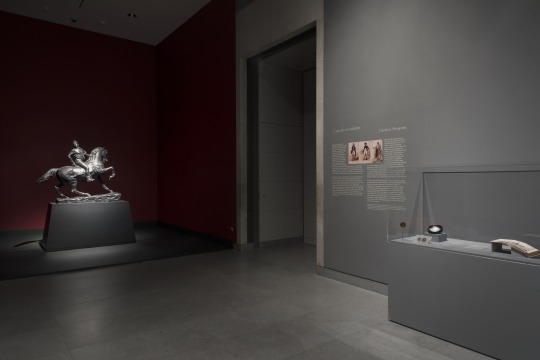
The introductory gallery features Wiley's Rumors of War—a smaller version of the monument he unveiled in Times Square last fall—which shows his continued interest in equestrian imagery (or sitters on horseback).

Here, he adapted a contested statue depicting the Confederate General J. E. B. Stuart installed on Monument Avenue in Richmond, Virginia, and transformed the sitter into a valiant young Black man whose likeness is a composite of several young men.
In Wiley’s words, this work functions “to expose the beautiful and terrible potentiality of art to sculpt the language of domination.”

This case displays several 18th and 19th-century objects from the Brooklyn Museum collection that show how Napoleon and his achievements were celebrated in visual culture during and after his rule.
Napoleon entered the military at 16, became a full general in the French Revolutionary Army at age 24, and in 1804, he crowned himself Emperor of the French.

This medal struck in 1806 aligns his profile with the early 9th-century Roman emperor Charlemagne. A savvy political propagandist, Napoleon liked to connect his reputation and image with ancient imperial glory.

David made the same connection in his painting, inscribing “KAROLVS MAGNVS” (Latin for Charlemagne) in the rocky foreground.
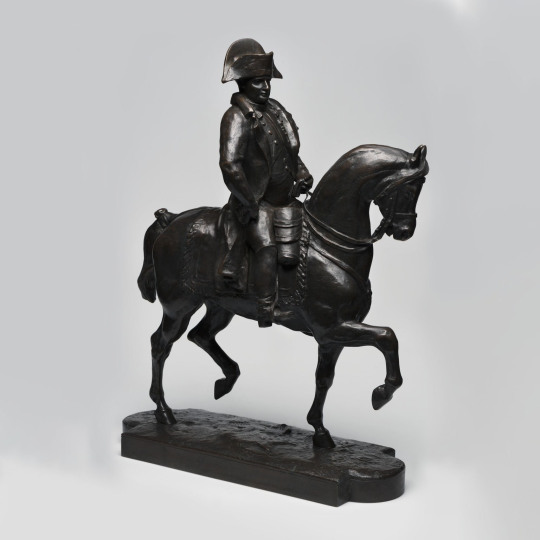
The equestrian format of Antoine-Louis Barye’s bronze sculpture of Napoleon echoes the same ancient visual tradition for portraying rulers David used in his painted portrait, and that Wiley continues in his painting and sculpture.
Barye made this sculpture in the 1860s, long after the end of Napoleon’s reign in 1815, during the rule of his nephew, Napoleon III, who sought to revive and connect to his uncle’s imperial image and legacy.

Visual propaganda goes both ways! This small section features several early 19th-century satirical prints that subverted Napoleon’s heroic persona by belittling his character and portraying him as a villainous despot.
The British, who were constantly at war with France during this period, were especially good at creating scathing, satirical images of Napoleon, whom they gave the unflattering nickname “Boney.”

In this 1806 etching, James Gillray highlights Napoleon’s penchant for installing loyal rulers across his growing empire by showing him pulling his “imperial gingerbread” from the “new French oven” while behind him his Foreign Minister Talleyrand kneads the dough to make more. If you look to the right, you’ll see a favorite detail: a group of “Little Dough Viceroys” waiting to be baked.

The main gallery focuses on the David and Wiley paintings. Made two centuries apart, they highlight the connection of image-making to power, serving as a reminder, in this age of social media and celebrity, of the relationship between visual culture, dominance, and history.
The pairing offers a timely examination of the European canon, while also showing how historical artworks can speak to issues of race and power in the present moment.
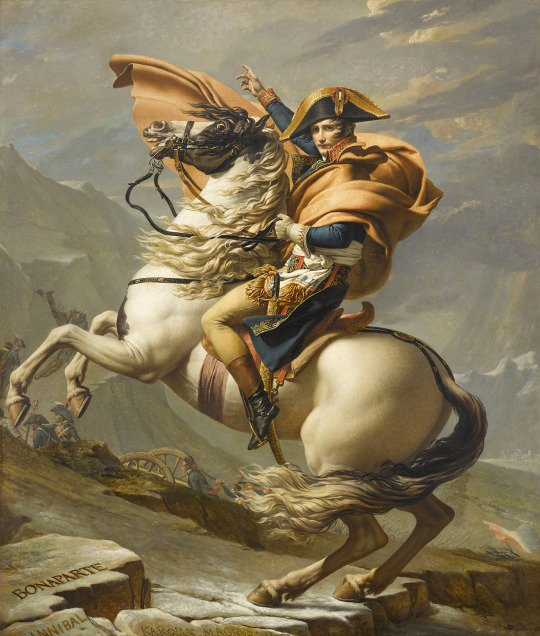
David reimagines Napoleon crossing the Alps in 1800, on his way to recapture Italian territory lost in war with Austria. With him was an army of 4,000 soldiers who pulled heavy artillery up 6,500 feet.
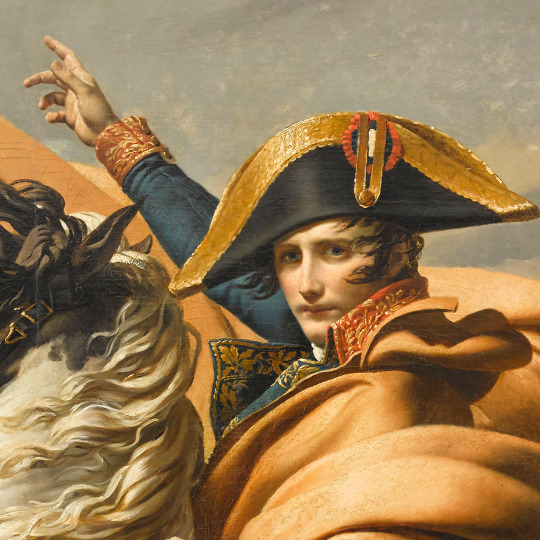
Reality check: Napoleon didn’t actually lead the charge across the Alps wearing a fine uniform and riding a white horse, but in a grey overcoat and riding a donkey.
This idealized image was meant to serve as an emblem of power, victory, and authority. It is pure propaganda, and has become a famous symbol of military glorification and the cult of personality.

King Charles IV of Spain commissioned David’s painting, but Napoleon himself liked it so much that he asked the artist to create a replica of it for him. We have on view the first version, which went to Spain.
Fun fact: In 1808 Napoleon made his brother Joseph the King of Spain, and he took ownership of David’s painting. When Napoleon lost power in 1815, Joseph went into exile in the US and took the painting with him to New Jersey, where it remained for at least 15 years!

Wiley engages with the grand tradition of European portraiture and its ability to construct images that convey the power of the sitter. His work shows his practice of drawing from older paintings, preserving the pose and composition. Here he swaps the heroic figure of Napoleon for a Black man, an everyday civilian, to highlight the fact that he and other brown and Black people have been written out of this history.
Part of his 2005 series “Rumors of War,” the painting is emblematic of Wiley’s complicated engagement with European history and portrait painting, showing, as he has said, that he’s “drawn toward that flame and wanting to blow it out at once.”

Wiley replaces the figure of Napoleon with a contemporary Black citizen. Wiley chose him using his technique of street casting, in which the artist invites passersby into his studio to pose for paintings.
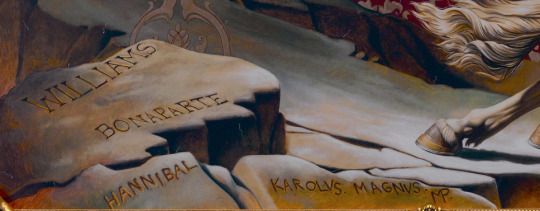
The sitter’s last name “Williams” joins the names of other military leaders in David’s original composition.
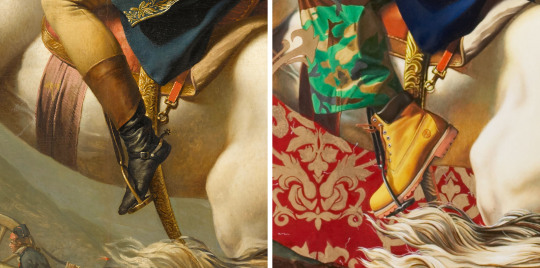
Wearing fatigues and Timberland boots, the sitter literally and figuratively redresses history. Although his camo attire updates the Napoleonic uniform, his style has more to do with what the artist has called “Brooklyn bravado” more so than an overt reference to the military.

Exhibition designer Lance Singletary created an opulent, theatrical space for the two paintings, including a central curtain swag that evokes the Napoleonic era. The golden crest, created by our talented graphic designer Paige Hanserd, combines David and Wiley’s initials enclosed by laurel branches.

The design is a nod to the laurel-wreath crown that Napoleon wore at his coronation and the popularity of the laurel motif in French Empire design.

This book in the last gallery shows Napoleon and his first wife, Joséphine Bonaparte, on the grounds of Malmaison, the couple’s residence from 1800–02. During this period, Napoleon reinstated slavery in France’s Caribbean colonies—a practice that had been abolished by the French Revolution in 1794.
Some historians believe that Napoleon’s decision was influenced by Joséphine, who was born and raised in Martinique to a family that made its wealth through a sugar plantation and the labor of enslaved peoples.

The final gallery also includes this sculpture by Wiley in the Brooklyn Museum’s collection. The work draws on an eighteenth-century bust by the French neoclassical sculptor Jean-Antoine Houdon.
youtube
The exhibition closes with a video of Wiley’s visit to Malmaison last year to see David’s painting in person for the first time. He comments on the ways in which history masks the construction of power, the labor of brown and Black bodies, and the complex racial overtones of imperialism.
Thank you for joining us on our virtual tour of Jacques-Louis David Meets Kehinde Wiley. Tune in next Sunday for another virtual tour of our galleries.
Installation view, Jacques-Louis David Meets Kehinde Wiley, Brooklyn Museum (Photo: Jonathan Dorado)
#virtual tours#davidwiley#kehinde wiley#virtual tour#exhibitions#art#history#brooklyn#brooklyn museum#art museums#jacques-louis david#museumfromhome#art history#virtualtour
190 notes
·
View notes
Text
Mesozoic Monthly: Gryposaurus

The Late Cretaceous-aged (~75 million-year-old) large-nosed North American hadrosaur (aka duck-billed dinosaur) Gryposaurus by ginjaraptor on DeviantArt.
Anyone who frequents the Pittsburgh area is familiar with ‘Pittsburghese,’ the regional dialect given full voice in what was once voted America’s ugliest accent (a fact that does not diminish our pride for it). One of my personal favorite Pittsburghese words is “nebby,” which translates to “nosy” for any non-local readers. “Nebby” can be used in a variety of contexts: the distant relative asking prying questions about your love life at Thanksgiving dinner is nebby, the pet cat trying to crawl under the bathroom door to see what you’re doing is nebby, and even the statue of Carnegie Museum of Natural History mascot Dippy the Diplodocus, silently judging your driving on Forbes Avenue, is nebby. We can assume other dinosaurs were nebby too, since so many had huge noses to stick into things. One of the biggest noses in the fossil record belongs to Gryposaurus notabilis, the star of this edition of Mesozoic Monthly.
Gryposaurus belongs to a group of dinosaurs called hadrosaurs, which are commonly referred to as duck-billed dinosaurs. Hadrosaurs were herbivores that got their nickname from the flat, toothless, somewhat duck-like beaks at the tips of their jaws. These beaks were used to bite through tough vegetation so that it could be ground up by the numerous teeth embedded in the rear half of the jaws. There are two main groups of hadrosaurs, both of which are featured in CMNH’s Dinosaurs in Their Time exhibition. Probably the more famous group is the Lambeosaurinae, known for their distinctive head crests that housed extra-long nasal passages. Virtually everyone can recognize the incredible backward-curving crest of Parasaurolophus (featured multiple times in the Jurassic Park franchise), and visitors to CMNH will also know the helmet-like crest of Corythosaurus. The second group is the Saurolophinae (traditionally known as the Hadrosaurinae), which typically lack bony crests. You can find a simulated carcass of the saurolophine Edmontosaurus (lovingly known to those of us in CMNH’s Section of Vertebrate Paleontology as “Dead Ed”) between the two imposing Tyrannosaurus skeletons in Dinosaurs in Their Time.

A gallery of hadrosaur heads. Top left: the lambeosaurine Parasaurolophus at the Field Museum of Natural History in Chicago (photo by the author). Top right: the lambeosaurine Corythosaurus at Carnegie Museum of Natural History (photo from Wikimedia Commons). Bottom left: the saurolophine Edmontosaurus at the Houston Museum of Natural Science (photo from Wikimedia Commons). Bottom right: the saurolophine Gryposaurus at the Natural History Museum of Utah in Salt Lake City (photo from Wikimedia Commons).
As a crestless hadrosaur, Gryposaurus was a saurolophine. Despite its lack of crest, its skull still had pizzazz: its nasal bone arched dramatically, giving the impression of a ‘Roman nose’ (which is very noticeable if you compare the skulls of Edmontosaurus and Gryposaurus in the image above). The name Gryposaurus notabilis means “notable hooked-nose lizard” in homage to this feature. G. notabilis is the type species of Gryposaurus; type species are typically the first ones to be named in a genus, and therefore become the reference to which all new specimens that may belong to that genus are compared. The other species (such as G. monumentensis, shown in the photo montage above) are similar enough to the type species that they can be referred to the genus Gryposaurus, but they differ in too many ways to be assigned to G. notabilis itself.
Occasionally, paleontologists will revisit a fossil species or genus and decide that it is either too similar to another to justify its own name or that certain specimens are too different to be grouped under the same name. Kritosaurus, another saurolophine with a ‘Roman nose,’ has fallen victim to both of these circumstances. It was originally considered its own genus, but was subsequently revisited by paleontologists who decided that it was so similar to Gryposaurus that the two genera were lumped together under the name Gryposaurus (when combining taxonomic groups, the first name that was published is the one that gets used). However, later paleontologists reviewed the evidence again and split a single species of Kritosaurus back out of Gryposaurus. The famous sauropod (giant long-necked herbivorous dinosaur) Brontosaurus underwent a similar series of changes over the years: originally, it and Apatosaurus were considered different animals, but after a review they were lumped together under Apatosaurus. Recently, the two were split apart again and the name Brontosaurus was revived (to the delight of fans of that name around the world).
It is not uncommon in paleontology for species to be lumped or split based on new or revisited evidence. When you consider that the decision to name new fossil species is often based on fragmentary, highly incomplete skeletons, you can see why it might be difficult to get things right the first time! These changes sometimes give people the impression that paleontologists “can’t make up their minds” or “contradict themselves,” but we must remember two things. First, that science is meant to change based on new evidence. Second, there have been thousands of paleontologists over the course of history, and every one of them is an individual person who can draw their own conclusions based on the same evidence. Although the resulting changes can disappoint fans of a specific animal or hypothesis, revision is normal and beneficial for the field as a whole. Scientists are supposed to be nebby – it’s how we make new discoveries!
Lindsay Kastroll is a volunteer and paleontology student working in the Section of Vertebrate Paleontology at Carnegie Museum of Natural History. Museum staff, volunteers, and interns are encouraged to blog about their unique experiences and knowledge gained from working at the museum.
#Carnegie Museum of Natural History#Mesozoic Monthly#Gryposaurus#Cretaceous#Hadrosaur#Dinosaurs#Dinosaur
18 notes
·
View notes
Text
Three Great Details About Apeshit By Beyonce & Jay-Z
“I can’t believe we made it,” sings Beyoncé in “Apeshit,” the first single from her surprise joint album with Jay-Z, Everything Is Love. And to prove that she and her husband have made it, in the song’s accompanying video, Beyoncé delivers this line from the Louvre.
As the New York Times has pointed out, it is not actually that expensive to shoot a video in the Louvre (about $17,500 for a full day’s shoot). But music videos aren’t about numbers; they’re about how things feel — and there’s no place on earth that feels as lavish, as rich with accumulated cultural power and wealth and colonialism, as the Louvre. If you want to show that you have made it, that you are rich and powerful and one of the greatest artists of your generation, you go to the Louvre.
And as an artistic choice, the Louvre is par for Beyoncé’s course. For the past few years, Beyoncé Knowles-Carter has increasingly cribbed from the iconography of classical Western art in her own image-making. Her pregnancy announcement photo shoot and her birth announcement photo shoot both referenced Botticelli’s Venus and the Renaissance trope of the Madonna and child, and her 2017 Grammys performance drew on goddess imagery from multiple artistic traditions.
So when Beyoncé shoots at the Louvre — taking on by turns the poses of Venus de Milo and Victory — she’s continuing an artistic project of recontextualizing classical Western art, of making herself the aesthetic object on which so much wealth and cultural capital has been spent. And coming from a black woman, that’s a radical statement.
“In a way, Beyoncé is exploiting/marketing her blackness as creativity — as a kind of weapon — within and against the very Eurocentric system of culture and consumption from which she has benefited,” says James Smalls, a professor of art history at the University of Maryland Baltimore County.
That’s an especially radical statement to make in the context of the Louvre, where little of the art features people of color in positions of strength and power. “From the Middle Ages up to the 19th century, works of art that showed black people usually represented them as servants or secondary figures,” explains Smalls. “They were not deemed worthy subjects of paintings, sculptures, or other kinds of cultural works.”
One of the few exceptions to that trend is Marie Benoist’s “Portrait d’une négresse,” also displayed at the Louvre. “That painting is an anomaly because it presents a black person as the sole aestheticized subject and object of a work of art,” Smalls says. And it’s the painting that appears at the end of the “Apeshit - Beyonce & Jay-Z” video, after shot after shot of portraits of white people.

Benoist painted “Portrait” in 1800, during a brief period in which France had abolished colonial slavery. (In 1794, the French emancipation proclamation liberated the colonies; in 1802, Napoleon reinstated slavery.) In that six-year span, portraits of heroic black people became popular in France, and that created an opportunity for an image of a black woman who is not tending to or subordinate to a white person, who is instead considered worthy of being at the center of her own portrait.
As Smalls has pointed out, in its full context, “Portrait” is not a wildly politically subversive image. It’s most likely that the unknown and unnamed subject was a servant with few legal rights who had little choice about how she posed or whether she was okay with her breast being exposed to the world for the next 200 years. Benoist the painter has much more agency here than the black woman at the center of the picture.
But in the context of “Apeshit,” with its montages of painting after painting of white faces and white statues, “Portrait” feels both shocking and subversive. It’s a black face in the center of the frame, apparently in control of her domain. And it’s one of the only figures in the Louvre that we don’t see get reinterpreted by either the Carters or their dancers: The only figure in the Louvre that can withstand the unstoppable force that is Beyoncé, that does not need to be remade and reexamined.
Part of Beyoncé’s project over the past few years has been to treat art as a form of power: It is a form of focused aesthetic attention, of social capital, and of wealth given solid form. Taking over the Louvre means taking all that power for herself and for the black bodies she brings in with her — except for the “Portrait.” In “Apeshit,” it can stand on its own.
What do Beyoncé, The Smurfs 2, and you have in common? All three have the theoretical ability to rent out the Louvre. Though there was widespread awe that the Carters’ video for “Apeshit” took place inside the most famous museum in the world, turns out, it’s actually not all that uncommon.
According to the New York Times, about 500 shoots take place at the Louvre each year, which have included films on opposite ends of the “is this a good movie” spectrum, from last year’s Wonder Woman to 2013’s The Smurfs 2, which even the Louvre couldn’t save from its 13 percent Rotten Tomatoes rating. Though the museum only allows photography in the galleries for private use, it makes exceptions for professionals through written authorization.
As of 2015, the Louvre’s policy states that to shoot a short film or music video, the cost for both interior and exterior shots would be just €4,500, or about $5,200. It’s possible that if the Carters had a crew of more than 50 people, that number would have been closer to €18,000, but as the Times notes, “there are hotel rooms here that cost more than that.”
Hosting private events, however, will cost you a bit more. A tour for under 50 guests will set you back €10,000, while renting out the reception hall beneath I.M. Pei’s pyramid will cost, at the very least, €28,000. Though, to reiterate, that isn’t an amount at which anyone would gasp, “Mon dieu!”
Lorde, I have an idea for you about where to film your video for “The Louvre.” Call me!
In the video for Beyoncé and Shawn Carter‘s “Apeshit,” the first visual from the pair’s surprise joint album Everything Is Love, the two stars romp through the Louvre in Paris, seizing center stage in a high-culture palace that – like most Western art museums – historically made little room for non-white artists.
Some of their mission involves the strategic highlighting of non-white images already in the Louvre. Beyoncé and Jay-Z rap in front of an Egyptian sphinx, and in galleries filled mostly with neo-classical French paintings – white artists, white subjects – the camera singles out black faces. (The video is directed by Ricky Saiz, who also helmed the “Yonce” video from Beyoncé Knowles-Carter’s eponymous 2013 album.) Viewers catch brief glimpses of a pair of black figures in Paolo Veronese’s painting “The Wedding at Cana,” where Jesus turned water into wine, as well as a quick look at Marie-Guillemine Benoist’s “Portrait d’une Négresse,” a depiction of a black woman staring guilelessly back at the viewer.
But the Where’s Waldo? moments highlighting black figures are fleeting – the possibilities for this in the Louvre, or any major Western art museum, are limited from the start. So Beyoncé and Jay-Z set about interjecting blackness into a space that has never placed much value on it, claiming one of the centerpieces of European culture with gleeful defiance. They frequently film themselves moving in opposition to the frozen stillness of paintings by Jacques-Louis David, a French neoclassical artist whose work – like “The Oath of the Horatii” and “Madame Récamier” – invokes the Greco-Roman tradition.
Much of the potency of the “Apeshit” video comes from the contrasts drawn between the “white” art on the walls and the black women on the gallery floors. In front of David’s “The Consecration of the Emperor Napoleon and the Coronation of Empress Joséphine,” a court scene of relentless white extravagance, Beyoncé and eight black dancers hold hands and begin to dance. It takes just a few synchronized sashays to upstage David’s massive painting, replacing an ornate symbol of white authority with a celebration of black bodies in motion. The Louvre’s stature depends on people believing that “The Coronation of Empress Joséphine” is the art, but the eye tells a different story – hanging behind Beyoncé and her dancers, the painting is reduced to wallpaper.
Throughout the “Apeshit - The Carters” video, Beyoncé and Jay-Z repeatedly upstage some of Western classical art’s most famous images in one of its central sacred spaces. Beyoncé holds a series of chopping micro-poses with her hands before Saiz cuts quickly to an image of a distressed character, hands held up to shield her head, taken from another David painting, “The Rape of the Sabine Women.” The placement of the hands connects the two frames, but Beyoncé’s is virile, aggressive and in charge, while David’s figure seems merely fearful.

Radical gestures roll in on a mightily slippery sliding scale these days, don’t they? We’re far past any cultural division between high and low or pop and art at this point, and artists on the charts are also sniffing out their next inspiration, album cycle, or comparison to their own personal affairs in the grander schemes of culture and history. You’d be hard pressed to find a more hallowed repository of the West than the Louvre, so of course that’s where Beyoncé and Jay-Z have rolled up to set their new music video for the track “Apeshit” from the fresh album they dropped like an anvil right on top of your weekend.
Of course this isn’t the first time they’ve been there, nor the first time some Pop-ish upstarts made a Major Statement at the French museum, but it would seem to be a major escalation in the Carters x Louvre relationship, to say nothing of the pride re: their own marital ties that the album and video are so keen to showcase. When worlds (and genres) collide is still a strong trend across multiple spheres of art and culture—turning meaning and message into something of a competitive game of Russian nesting dolls or an arms race of spectacle-based oneupmanship—but what might we make of this night at the museum if considered in light of the 1960s Marxist avant-garde French Situationist International?
Founded in 1957 by Guy “Barrel of Laughs” Debord and Asger “Beware the Palette Knife” Jorn, the Situationists were guys and gals, but mostly guys, who wanted to, as the name would indicate, create some situations and elevate to the level of philosophy the notion of taking a freaking walk outside. But they also had a strategy! And key among their techniques, to which you can probably attribute the rise of “culture jamming” and just whatever Banksy thinks he’s doing, was the détournement. Discussed in chapter 8 of Debord’s 1967 tract The Society of the Spectacle, the technique calls for taking advantage of existing cultural objects or canonized art, rerouting their message, and even advocates for theft: “Plagiarism is necessary. Progress depends on it. It sticks close to an author’s phrasing, exploits his expressions, deletes a false idea, replaces it with the right one.” You would not have wanted this guy for your editor, but if you were looking to smash the state (of meaning), Debord was your man.
youtube
So, if “détournement serves as a reminder that theory is nothing in itself, that it can realize itself only through historical action and through the historical correction that is its true allegiance,” then is the spectacle of “Apeshit” a glam, historical correction of the Western assumption that houses of European culture contain the highest achievements of man- and womynkind? Beyoncé and Jay-Z have more clout and pull at this point than a merely rich person or garden-variety aristocrat putzing around the Cotswolds or Monaco, and they built that for themselves. When they pull off a stunt like this, it feels like another chime in the prosperity gospel that Doreen St. Félix examined in the arc of Rihanna’s career, as well as further evidence that the ability to make a compelling spectacle of oneself, to write a personal narrative as large as that of the progress of a civilization, is success.
The false idea here is white supremacy, and perhaps the correction then is that European colonialists may not have had the time or the means to make their masterpieces if it weren’t for the economic boon of slavery and historical pillaging of resources from southern and eastern continents for the benefit of countries like France. The Situationists didn’t really like spectacle much (“The spectacle in general, as the concrete inversion of life, is the autonomous movement of the non-living”) but they recognized that it was inescapable in modern society (“The spectacle is not a collection of images, but a social relation among people, mediated by images”).
Given this circumstance, Beyoncé and Jay-Z, god bless them, would appear to be doing their best to create a spectacle that people who look like them can see themselves in too, as opposed to the near uninterrupted stream of black death spectacle the media and world is awash in on a day to day basis. Look forward to hearing this jam blasting out of car speakers this summer—it’ll be a real situation.
The surprise release of Beyoncé Knowles-Carter and Jay-Z’s new album, Everything Is Love, (credited as “The Carters” on the album to recognize they’re performing as a united duo, not as individuals) on Saturday, June 16 has left the music world reeling.
Already, what fans have been carefully dissecting – and what we’re interested in unpacking, too – is the imagery from the music video for the album’s lead single, “APESHIT”. The six-minute video is likely going to be considered one of the best of 2018, with The Carters and a troupe of dancers taking over the Louvre. In case you couldn’t already tell, the fact that Bey and Jay Z even got unfettered access to the Louvre for their own use is a stunning power move – adding a glorious power to the “APESHIT” lyric “I can’t believe we made it/ This is why we’re thankful”.
Let’s start with the primary location in “Apeshit”: the Louvre. Historically, it’s a predominately white space that primarily features white, male-created works of art. It’s a microcosm of history, which itself is mostly white, male, and heterosexual. Tradition and the Louvre go hand-in-hand, too, which means that Beyoncé and Jay-Z’s presence is a total disruption from the beginning. For modern audiences and fans of The Carters, the disruption is surely welcome.
Not only can we expect to see (and do see) The Carters standing next to some of the most famous works of art, including the Mona Lisa and Winged Victory of Samothrace, but we see that they are aligning themselves with it right out of the gate. Their presence in a place that preserves what history has deemed the most important artworks, standing next to said art while themselves looking like art and using their body language to engage with this art, already implies they are as worthy of being there as the older work. It’s a middle finger to convention, a dare aimed at squarely at the gatekeepers of history and artistic tradition: You know we deserve to be here.
The Carters begin positioning themselves as iconography from the moment we first see them, standing in front of the “Mona Lisa”. Sure, it’s a callback to the first time they took a photo with arguably the most famous painting in history back in 2014, but something is different this time around.
Like the “Mona Lisa”, Beyoncé and Jay-Z are dressed simply, but powerfully. Suits for both, in bright colours and styles specific to their tastes and representative of the times they live in; again, just like the “Mona Lisa”. But even more of an echo of the painting is their expressions: a strong stare straight ahead, lips pressed together, shoulders back. They are telegraphing to us that they are as iconic as the “Mona Lisa”, without even saying a word. By donning expressions very much in the same vein as the iconic painting, they’re telling the viewer that they’re basically in the presence of a peer.
But even more than that, they’re commenting on the beguiling and enticing space they occupy in our own culture. Much like the “Mona Lisa”, they are telling us that they know we think about them in a way we don’t think about other music artists. They know that we’ll spend hours analysing them and their work, attempting to find meaning in their movements and lyrics, trying to work out the symbols and icons they’ve put forth, and hoping to crack the impenetrable fortress they’ve built around them (from which they only emerge to become vulnerable when they want to).
Humans have spent centuries trying to unpack the enigma of the “Mona Lisa” and still continue to do so to this day; do you really think you can figure out The Carters in a day?
Another immensely important moment from “APESHIT” comes in the repeated glimpses of Marie-Guillemine Benoist’s “Portrait of a Black Woman (Negress)” from 1800. One of the few works of art painted by a woman in the Louvre, the painting is deeply important both as a feature in the Louvre and its place in art history, because it is the only painting of its time to depict a black woman who is not a slave or similarly subjugated person, but rather simply presented in all her glory.

The painting affirms that black women are worthy of being in artistic spaces, and in enduring imagery. The painting is shown a few times, and it’s the second to last painting we see before the video closes on Bey and Jay turning around to regard the “Mona Lisa” – further confirmation that Benoist’s painting and its subject deserve recognition.
It’s also no accident that the “Winged Victory of Samothrace” statue is frequently seen in “APESHIT”. Implying triumph and power, the statue has endured over centuries, and The Carters imply just as much by once again standing in front of it, in perhaps a nod to their own triumph and the power they’ve achieved. According to the Louvre website for the piece, the statue depicts Nike, and was likely created to commemorate a naval victory by the Rhodians (who hail from Rhodes, part of the Dodecanese island group in Greece). The towering relic from the Hellenistic period is, as the Louvre’s description notes, intensely dramatic and glorifies the female body in connection with something traditionally masculine (victory in war).
That endowment of power to a female body is then emulated in the female bodies that stand before it in present day, through Beyoncé and her troupe of female dancers. All of these women come together and move as one being, with Beyoncé presiding over them all. She is the modern image of victory over the warfare placed on her body, career, intellect, personal life; having succeeded, she can now dress like “Winged Victory” and, in a sense, pass along her victories to the women who dance on the steps in front of her.
Twitter user Queen Curly Fry’s in-depth Twitter thread breaking down the art seen in “Apeshit” is thorough, and her comments on the incorporation of the “Venus de Milo” into the video is so neatly articulated that we couldn’t have said it better if we tried: “Here, Beyoncé once again models herself as a Greek statue, this time the Venus de Milo. However, in this shot she wears a nude bodysuit with wrapped hair, reframing both goddesses of beauty and victory as a black woman. This dismantles white-centric ideals of beauty.”
Similarly, Twitter account Tabloid Art History nails why it’s so important and iconic for Beyoncé Knowles-Carter and her dancers to be dancing in front of “The Consecration of the Emperor Napoleon and the Coronation of Empress Joséphine” by Jacques Louis David from 1804: “What I especially like about this part of the video is that the painting itself depicts a disruption, Napoleon taking the Pope’s role from him and crowning Josephine himself. Beyoncé further disrupts this by taking on Josephine’s role as the one being crowned.”
If we consider Napoleon’s role as a major coloniser in the early 19th century, particularly in Northern Africa, then Beyoncé’s placement in the shot is extra symbolic. Beyoncé standing underneath the place where Napoleon is seen crowning his wife in the painting is a symbolic retrieval of stolen power.
One of the other paintings we see in “APESHIT” is another Jacques-Louis David painting, “The Intervention of the Sabine Women.” Interestingly, we only see portions of the painting, never the entire artwork. This could be a sly comment on the dissection and appropriation of black bodies by white culture for their own aesthetic uses – or it could just be a deft use of quick cuts for dramatic effect for the video. Or maybe it’s both.
Twitter user Queen Curly Fry notes here that the painting, for the puposes of “APESHIT”, depicts “(white) female fear evoked by (white) male violence is juxtaposed w/ (black) female empowerment (‘get off my dick’).” The painting’s use of white female tears –long criticised as a way for white women to shift any blame they deserve for racist behaviour, or to turn a blind eye to racial injustice – is in direct contrast with Beyoncé and her dancers’ freedom, calm, and enlightenment.
In the end, “APESHIT” is a triumph because it is a statement that only The Carters could successfully make. The visual tells the powers that be to fuck off with their tradition, their preciously guarded history that has sought to erase non-white people from the history books, and their preconceived notions about how black bodies can be ornamental.
They’ve used art to push back, to demand honour for the work they’ve contributed. “APESHIT” is a force to be reckoned with, and The Carters’ use of art to make a statement is an announcement to the world that they’ve shaped culture as much as anything hanging on a gallery wall.
6 notes
·
View notes
Text
Au Revoir Paris
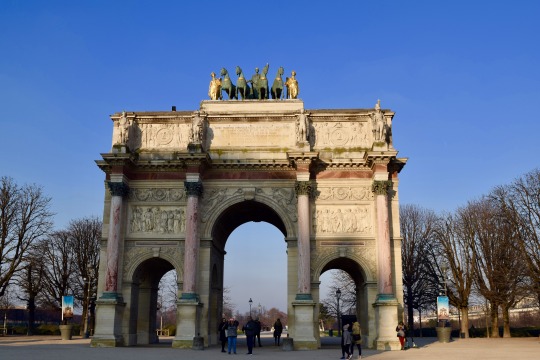
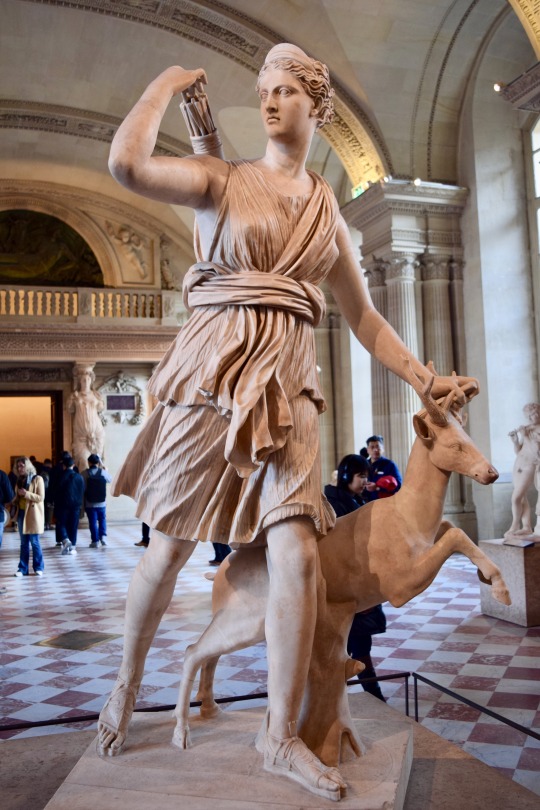
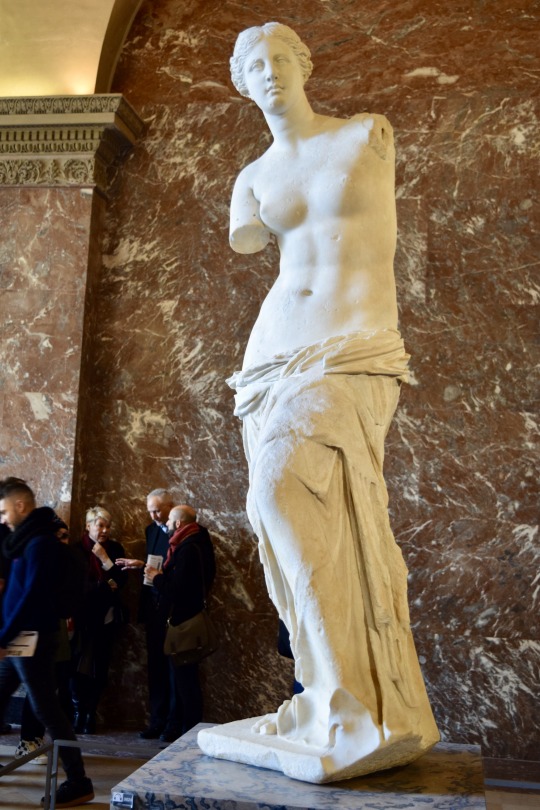
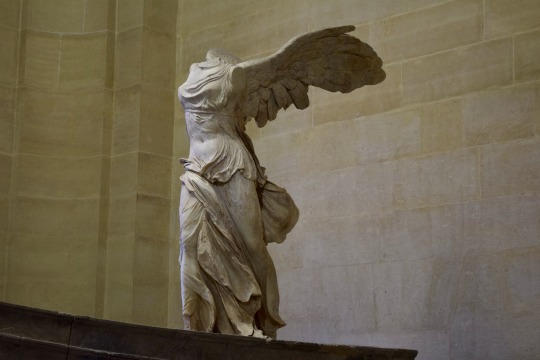
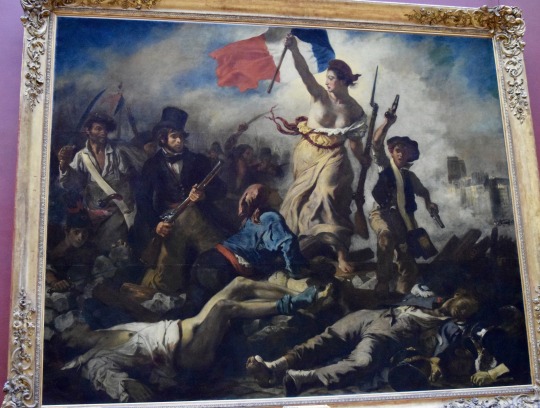
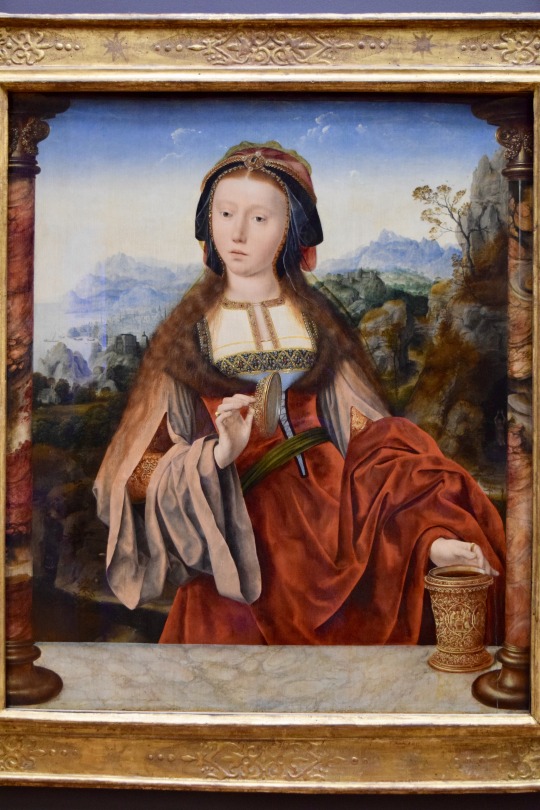
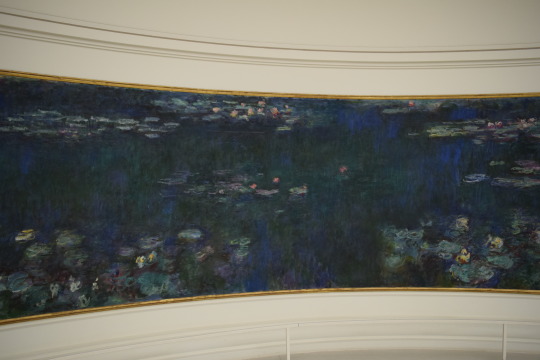
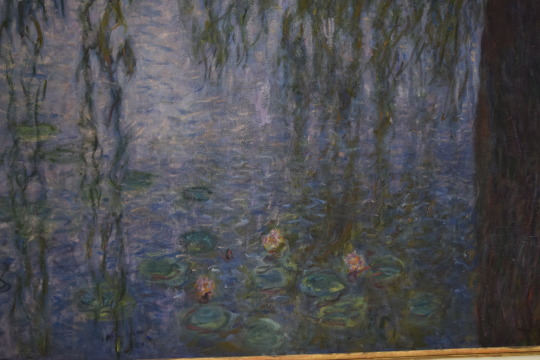
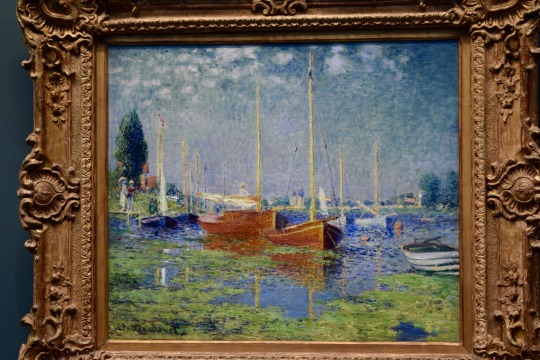
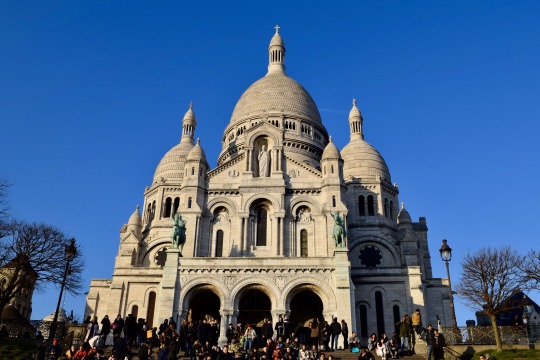
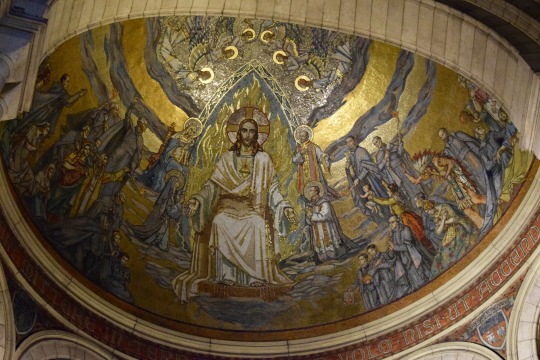
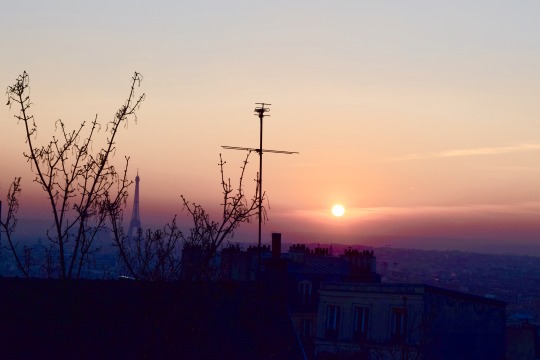
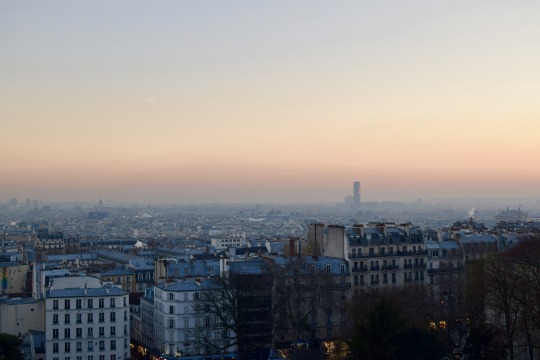
21/1/19
We had a packed itinerary for Monday, our last day in Paris. First we had a guided tour of the Musée du Louvre. Before entering the museum, we once again walked around the Jardin des Tuileries. The sun was out that day, and everything looked so different; the statue of Napoleon on top of the mini arch shined brilliantly in the light. Once inside, it was absolutely hectic. I have been here twice in Winter now, and it has been way too crazy for me - I don’t even want to think about what it would be like in Summer, the peak tourist season! Our guide took us to all the classics. Starting with the Greek and Roman statues, the highlights for me were the statue of Diana, the Roman goddess of hunting, and Venus, the goddess of love. We saw the Mona Lisa of course, but there's always so many people crowded in front of it, and honestly, seeing it last time was enough for me.
I was happy to see the most famous painting of the French Revolution again. The painting is called Liberty Leading the People. I didn't know this until this visit to the Louvre, but the painting was actually commemorating the second French Revolution in 1830. The portrait I’ve posted is from the same period as when the Mona Lisa was painted. This painting is much bigger, and the colours are much richer than the Mona Lisa. That is because the Mona Lisa was painted over with a glaze that dulled and darkened the colours, whereas this painting did not receive this kind of glaze. Therefore, I found this painting interesting to help me imagine what the Mona Lisa may have looked like when it was first painted.
On the opposite end of the Jardin des Tuileries was the Musée de l’Orangerie. This gallery exhibits impressionist art, and was also free for me to enter, which was an extra bonus! The gallery is famous for the eight Monet Water Lily murals on display. Called Les Nymphéas in French, each mural is composed of various canvases nearly 2 metres tall, but different widths, joined together so that they can hang on the curved walls. If they were lined up in one line, the murals would be almost 100 metres long! Interestingly, Monet donated the murals to France in the 1920s, to commemorate the end of the Great War.
There were four murals in each oval room, and there were benches in the middle of the room, so that viewers could appreciate the whole scene from afar. This panoramic display, in addition to the natural light pouring through the ceiling, had the effect of inviting the viewer into the painting; like you could reach out and touch the strands of the willow trees. The gallery also exhibits a number of significant French Impressionists, including other paintings by Monet (such as the sail boats above), Renoir and Cézanne. Overall, I really liked this museum, and I think its worth going to if you like impressionism, and have a spare two hours.
Finally, we spent the afternoon in the area of Montmartre. Montmartre sits on a hill that overlooks Paris, and has been an artist’s hub for centuries. Monet, Renoir, Toulouse-Lautrec, Picasso and van Gogh all lived there at some point. Even though I had been there before, I wanted to return to see inside La Basilique du Sacré-Coeur de Montmartre, which I had only ever viewed from the outside. Unfortunately we did not have time to climb the tower, which is 300 steps to the top and has amazing views of the city. However, the inside was absolutely beautiful. I think the really cool thing about cathedrals such as the Sacré-Coeur and Notre-Dame de Paris is that they are still used regularly for mass. Imagine either of these being your regular place of worship! The only downside of course is all the tourists that get in the way. In contrast to Notre-Dame, the biblical figures and stories were depicted with tiles. Since there is so much natural light inside, the mosaics, particularly the gold tiles, glittered in the sun, which was mesmerising to behold.
Next we walked up to the town square called the Place du Tertre, which is a place where artists come to sell paintings and prints. It was just how I remembered, except last time there was a mime performing there. As it is a touristy area, there were people drawing caricatures, but there were also genuine artists, with their easels and canvases, painting between sales. Upon descending from Place du Tertre, we caught a glimpse of the setting sun. If you look closely in the first photo, you can see the silhouette of the Eiffel Tower on the left. It was an enchanting end to a wonderful weekend.
#paris#france#musée du louvre#musée de l'orangerie#montmartre#sacré-cœur#student exchange#weekend getaway
1 note
·
View note
Text
Best Things to Do in Rome
New Post has been published on https://www.travelonlinetips.com/best-things-to-do-in-rome/
Best Things to Do in Rome
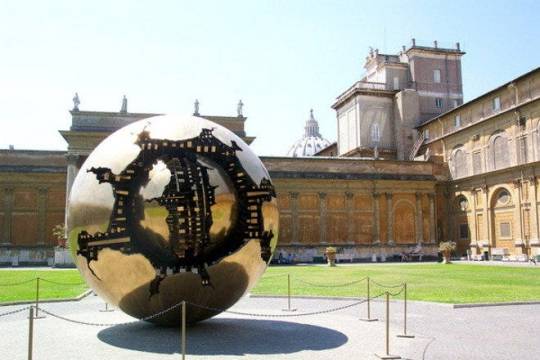
Rome wasn’t built in a day, nor does anyone expect you to see it in one either. From monuments and museums to churches and amazingly intact archeological sites, there’s plenty to keep visitors of the Eternal City busy.
Museum buffs with a particular interest in some of the world’s finest collection of Baroque and Renaissance art will certainly find plenty to do and marvel at inside the Vatican Museums. More of a modern and contemporary art type of person? Head to the new kid on the block, the MAXXI museum.
If you’re a history buff interested in witnessing some of Ancient Rome’s best preserved monuments, visiting the Colosseum and the Pantheon will certainly be on the top of your list. For those looking for a holier than thou experience, head to the mother of all churches, St. Peter’s Basilica.
Or maybe you’re coming to Rome to eat. If so, look no further than Eating Italy Food Tours. This unique Rome tour will have you eating for 4 hours on the streets of Rome in off the beaten track neighborhoods that locals cherish but tourists don’t even dream about.
However you decide to spend your time in Rome, don’t forget to stop every now and then and make an attempt to take it all in. It is after all, one of the most beautiful cities in the world and you’ll be pinching yourself from the moment you arrive.

Visiting the Eternal City and not making a stop at the Vatican Museums is almost like breaking one of the ten commandments. It’s where some of the world’s greatest art collection is stored. The Vatican Museums are actually a part of the Vatican palaces, where popes have lived since the 1200s. Inside you’ll find works such as Egyptian relics, Etruscan artifacts, Renaissance paintings and Greek and Roman sculptures and busts, all housed in maze of apartments, galleries and palaces. Let’s also not forget about, perhaps what many consider to be the true gem of it all, the Sistine Chapel where Michelangelo’s famous Last Judgement can be seen. Entrance is free on the last Sunday of the month (9:00am-2:00pm), with last entry 90 minutes before doors close.
From Monday to Saturday (9:00am-6:00pm), last entry is 2 hours before closure time. Metro: stations Ottaviano-Musei Vaticani; Cipro. Bus: 49. Tram: 19.
Recommended for Best Attractions & Activities because: The Vatican Museums will beyond impress any visitor and features the most important masterpieces of Renaissance art in the world.
Maria’s expert tip: Book your tickets online (http://biglietteriamusei.vatican.va) and you’ll avoid having to wake up at the crack of dawn to wait in line for a couple of hours. Buying your tickets online only costs you 4 euros more than what you’d pay at the ticket booth and is definitely worth it as you get to skip the line.
Read more about Vatican Museums →
You can’t get anymore Baroque beautiful than Piazza Navona. This piazza has it all: three glorious fountains, Bernini sculptures, a lovely outdoor caf� scene and the magnificent Sant’Agnese in Agone church. In the first century A.D., this piazza was built over the Stadium where Emperor Domitian hosted chariot races and other contests. The most prominent of the fountains in the piazza is the Fontana dei Quattro Fiumi. Bernini created the fountain for Pope Innocent X in 1651. The fountain represents the four rivers and four corners of the world: the Nile; the Plata, the Danube and the Ganges. BUS 40, 64, 492, 30.
Recommended for Best Attractions & Activities because: Piazza Navona is one of the most beautiful squares in Rome and is renowned for its stunning Baroque fountains.
Maria’s expert tip: For a serene view of Piazza Navona that’s virtually empty and all to yourself, make your way over to the piazza around 7am.
Read more about Piazza Navona →

What was once the location of a Peroni brewery (one of the most famous Italian beer makers) in the Salario-Nomentano distrit of Rome, is now the industrial space where Rome’s uber sleek contemporary art museum, the MACRO is located. The museum recently underwent a massive makeover, giving it a stylish mod steel and glass exterior design. MACRO often showcases light installations, contemporary and pop artworks by world-renowned and emerging Italian and international artists. The collection covers pieces dating back to the 1960s through today. The museum also has a sister site in Testaccio which also feature contemporary art. BUS: 80, 38.
Recommended for Best Attractions & Activities because: Visit for the contemporary are but to also see a great example of Italian use of old and abandoned space.
Maria’s expert tip: If you’re in the area of Testaccio, check out MACRO’s sister museum, the MACRO Testaccio, a former slaughter house-turned contemporary art museum.
Read more about Museo d’Arte Contemporanea di Roma (MACRO) →
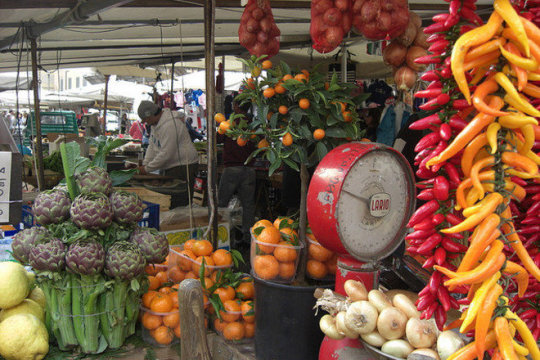
If you feel like visiting quintessential Rome, there’s no better place to do it than at the Campo de’ Fiori open air market or mercato all’aperto. Taking a stroll through this market, gives you a glimpse of Italian culture. Once inside, you’ll witness the vendors take center stage as they turn the art of selling a tomato into an off-Broadway performance. By day, the Campo de’ Fiori market sells all types of fresh fruit and vegetables, cheese, meats and even fish. There’s also a lovely flower market in the far corner of the piazza. The Campo de’ Fiori Market is open Monday through Saturday from 7.30am-1.30pm. BUS: 40, 64, 46. TRAM: 8.
Recommended for Best Attractions & Activities because: One of Rome’s oldest market and still frequented daily by locals and tourists alike.
Maria’s expert tip: Taking a stroll through the market won’t cost you a dime. If you decide to buy something, it’s best to make sure you have spicci (change) on hand as big bills are often frowned upon at the outdoor markets.
Read more about Campo de’ Fiori Market →
Commonly referred to as the ‘mother of all churches,’ St. Peter’s Basilica was comissioned in 324 AD by Constantine as a church to be dedicated to the Apostle Peter. The church was reportedly built on the burial site of this most influential Christian, who was crucified upside down in the nearby Circus of Nero in 64 AD. The original church was destroyed in the 16th century, and the present church was built on the same site. Guided tours of excavations around Peter’s tomb are available. Fall and winter closures are about one hour earlier. It is also possible to visit the top of St. Peter’s dome by either climbing the stairs (about 500 steps) for 5 euro or taking the elevator all the way up for 7 euro. METRO: Ottaviano/San Pietro, BUS: 46, 64, 492.
Recommended for Best Attractions & Activities because: Don’t miss the biggest church in the world and it’s beautiful late Renaissance artwork.
Maria’s expert tip: Make sure not to wear shorts or sleeveless shirts. If caught with bare shoulders or your knees showing, you will be denied entry into the basilica.
Read more about St. Peter’s Basilica →

Rome’s number #1 rated food tour and only one of its kind, runs daily except for Sundays in two real Roman neighborhoods (Testaccio and Trastevere). On this four hour journey through the streets of Rome, you will get to enjoy about 10 authentic tastings (from tiramisu to buffalo mozzarella to pizza) at gourmet food stores, bars, a restaurant & fresh food market. You will get to really know the city through its people, culture and cuisine in a truly unique way and the best part of the tour (aside from the unforgettable food!) is that it takes you to the parts of Rome that you wouldn’t have ordinarily stumbled upon.
Recommended for Best Attractions & Activities because: The most unique way to explore Rome is through its food. The tour takes people off the beaten track and into real Roman neighborhoods.
Maria’s expert tip: Get in early because group sizes are small and tours book out fast.
Read more about Eating Italy Food Tours →

Photo courtesy of ho visto nina volare
The new kid on the block in Rome is the MAXXI museum (Museo di Arte del XXI Secolo) which opened in 2010 in the Flaminio area. The museum has the famous Iraqi-born architect Zaha Hadid to thank for its stunning 60 million euro design and creation. The MAXXI holds some of Italy’s most prized contemporary pieces of art and is divided into two sections, namely “MAXXI art” and “MAXXI architecture”. It also contains a library specializing in art and architecture and galleries where exhibitions and special performances are held. The museum also takes part in the annual Rome International Film Festival held in November. TRAM:2. BUS: 53, 217, 280, 910.
Recommended for Best Attractions & Activities because: MAXXI is Rome’s center of excellence when it comes to modern and contemporary art.
Maria’s expert tip: In the summer months, the MAXXI sometimes organizes free events such as musical performances, lectures and concerts.
Read more about Museo Nazionale delle Arti del XXI Secolo (MAXXI) →
One of the best preserved monuments and best examples of Ancient Roman architecture in the city is the Colosseum. It took nearly ten years to build one of the world’s largest public venues: heroic arches, columns and windows that stood 160 feet high and a seating capacity of 50,000 which made this arena so immense and prominent. Construction of the arena was ordered by Vespasian in A.D. 72 and was inaugurated by Titus in A.D. 80 with combat games involving gladiators and animals. Aside from bloody battles, legend has it that Christians were also fed to the lions at the Colosseum. BUS: 87, 571. METRO: Colosseo
It was also here that Christians were fed to the lions.
Recommended for Best Attractions & Activities because: The Colosseum is the most recognizable monument in the world and is a must-see for all visitors.
Maria’s expert tip: Admission to the Colosseum also grants you free access to the Roman Forum and the Palatine Hill.
Read more about Colosseum →
Thanks to Fellini’s Dolce Vita, the Trevi Fountain has served as a picturesque backdrop for Hollywood blockbusters like Three Coins in a Fountain and Roman Holiday and a dream come true for young women looking for love. Legend has it, throwing a coin into the Trevi Fountain, will ensure you a return trip to the Eternal City. The fountain is a dramatic aquatic marvel for visitors thanks to its vast basin ensconced between three tiny streets (the “tre vie,”) with cascades of water that appear to be streaming from the wall of Palazzo Poli. Believe it or not, the Trevi Fountain is quite the money maker. Authorities say it rakes in some 600,000 a year, all of which is donated to charity.
Recommended for Best Attractions & Activities because: The Trevi Fountain is the most famous fountain in the world and certainly one of the most beautiful.
Maria’s expert tip: Make sure you know how to toss the coin in the right way. Toss the coin with your right hand over your left shoulder and your back to the fountain. One coin means you’ll surely return to Rome. Two coins mean you’ll return to Rome and find love at last. Three coins mean, you’ll return to Rome and marry the love of your life.
Read more about Trevi Fountain →
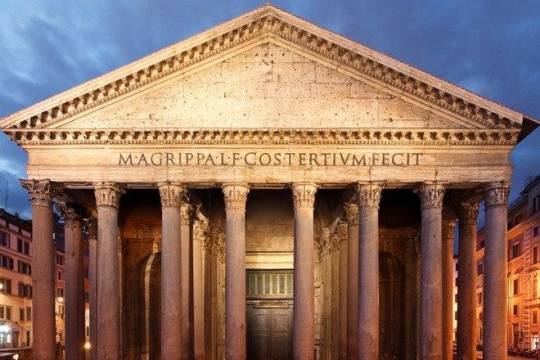
After the Colosseum, undoubtedly one of Rome’s best preserved monuments is the Pantheon. It was originally meant to be a pagan temple only to be later converted into a church. The original rectangular facility, which was comprised of 16 granite columns, serves as the porch of the dome structure. The immense preserved building, located in Piazza della Rotonda, makes photographs postcard perfect. The piazza where the Pantheon is located also happens to be a favorite hangout for young people and a popular sport for diners eating a meal at one of the various outdoor cafés. BUS: 40, 64, 46, 916
Recommended for Best Attractions & Activities because: The Pantheon is Rome’s finest example of preserved ancient Rome monuments.
Maria’s expert tip: Enter the Pantheon during some rainfall and you’ll witness a cascade of rain entering through the large circular hole at the top of the dome. Onlookers are often marveled by the fact that the rain doeson’t flood the floors of the monument. Rather, it creates a waterfall onto the resplendent marble floor and gradually drains away.
Read more about Pantheon →
Source link
0 notes
Text
"I respond to every fucking detail of the time we're in" says Frank Gehry
Frank Gehry's new tower in Arles fits with both the ancient Roman city and today's environmental agenda, the architect claimed in an exclusive interview with Dezeen.
Speaking to Dezeen in Arles last week the Pritzker Prize-winner said The Tower, which has a steel-and-concrete frame and a glazed drum at its base, responds to current concerns about the carbon footprint of architecture.
The Tower opened last week
"We fit into it," said the Canadian-American architect. "But I can't explain it. I respond to every fucking detail of the time we're in with the people we live with, in this place," added the 92-year-old when asked about the building's environmental performance.
"So it's all taken into account as best I can," he continued.
"You know, I believe that's the most important thing to do," he added, gesturing to the face mask in his hands. "To live in the place and time you are in and what the issue is, you know, even with these fucking masks."
Sustainable elements include natural ventilation of the circular glazed podium while some of the building's energy comes from renewable sources. However, precise details of the building's embodied carbon have not been disclosed. The team did not submit the building for environmental certification under the French HQE programme.
The tower forms part of the Luma Arles cultural campus
The Tower finally opened last week along with the rest of the vast Luma Arles cultural campus after a 14-year gestation period.
It serves as an entrance pavilion, lookout tower, exhibition-and-events space and beacon for the 27-acre campus commissioned by Maja Hoffmann, the art-collecting founder of Luma Foundation and the heiress to the Hoffmann-La Roche (now Roche) pharmaceutical fortune.
Founded in 2004, the philanthropic foundation "focuses on the direct relationships between art, culture, environmental issues, human rights, education and research".
The Luma name comes from Hoffmann's children, Lucas and Marina, echoing the way her father, the eminent environmentalist and World Wildlife Fund co-founder Luc Hoffmann, named his philanthropic conservation body MAVA Foundation after the initials of his children.
"I try not to repeat myself"
Gehry and Hoffmann, who is Swiss but grew up on her father's estate in the Camargue wetlands near Arles, first began discussing the building in 2006. This was long before sustainability topped the architectural agenda but when shiny icons were still very much the rage.
Their conversations began nine years after the opening of Gehry's titanium-clad Guggenheim Museum Bilbao and three years after the completion of his stainless-steel Walt Disney Concert Hall in Los Angeles.
But Gehry said that each project is a one-off rather than fitting into an evolution of his architectural approach.
"I try not to repeat myself," he said. "I just think about it at the time I'm doing it, the people I'm working with, like Maja, the community."
"So I don't think of it," he added. "I mean, naturally, there's like this historical lineage but it's just how I feel at this time in this place."
Gehry's influences include Roman and Romanesque architecture
The 1997 Bilbao building introduced Gehry to the world, rebooted the city's economy and self-image, and fuelled the trend for iconic cultural buildings in cities hoping to replicate "the Bilbao effect".
Gehry sounds a little bemused by the term. "I don't really care about that, but it's nice that it changed the community," he said, as one of his team interjected, pointing out that he received death threats when the building was first proposed.
"When I went to Bilbao it was sad," he continued. "They were having a hard time economically. The kids growing up left Bilbao to go to college. They didn't stay there."
Gehry's Guggenheim is credited with turning around the fortunes of the post-industrial city in Spain's Basque country.
"I didn't mean to change the city"
"This has changed the economy," he said. "People come. I've been told they earn over eight billion Euros since the building opened. When you go there now it's friendly and open and happy."
"People are always telling me how I changed the city," he added. "I didn't mean to change the city, I just meant to be part of the city."
But Arles is no Bilbao. The UNESCO world heritage site is already a magnet for visitors coming for its spectacular Roman remains, its connection with artist Vincent van Gogh and Les Rencontres d'Arles, its world-renowned annual photography festival.
Located in a former SNCF railway engineering works on the edge of town, the Luma Arles campus adds another world-class attraction to the tiny city, which has a population of just 50,000.
The Luma Arles campus is at the edge of the ancient city
The railway sheds, repurposed into workshops, galleries and performance spaces by Selldorf Architects, are monumental in scale but these are eclipsed by Gehry's 56-metre-high tower. It is by far the tallest building in the area and dominates Avenue Victor Hugo, the main route into Arles, on a rise above the campus.
It towers over French architect Marc Barani's low-slung and discreetly minimalist École Nationale Supérieure de la Photographie, the French national photography school that sprang from the photo festival and opened in 2019, which lies directly across the road.
Arles, once a Roman provincial capital, sits on a low hill beside the river Rhône just before it enters the Camargue wetlands (which Hoffmann's father is credited with saving and where he established the Tour du Valat nature reserve) on its way to the Mediterranean, which is over 40 kilometres away.
"I don't antagonise. I don't try that"
The idea to build a tower came from Hoffmann, who expressed a desire to be able to "see the sea from the tower". But despite the requirement to build tall, Gehry said he did not intend to build a provocative structure.
"Well, I try to make it the scale of where we are," he said when reminded of the backlash from neighbours when he built his seminal 1978 home in Santa Monica. "And I try to make it user-friendly and not off-putting. So, you know, I don't make it black. And I don't antagonise. I don't try that. That's not my way."
The design process involved making dozens of scale models, many of which are exhibited in the vast exhibition space beneath the tower. These show how various approaches were explored including stacks of cubes, piles of oblongs and fabric-like forms.
However, none of the early models shows the twin concrete lift towers that break up the sculptural form at the rear of the tower.
A pair of concrete lift towers protrude from the rear of the tower
"There are over 100 models made of metal, wood… it was a long, long journey," said Gehry.
Over his career, Gehry has pioneered new approaches to creating architectural form, including scanning roughly made paper and card models and manipulating them in 3D software.
But this time, the models were made by his team. "I don't make them myself," he said. "I used to. It is a collaborative effort."
Gehry cites numerous local influences on the tower's form. Vincent van Gogh, the artist who lived in the city between 1888 and 1889 and painted many of his best-known works here, is one of them.
Gehry has compared the stainless-steel facade to the brushwork in Van Gogh's painting of Les Alpilles, a low range of mountains to the north-east of Arles that features distinctive limestone outcrops. He has also cited the nocturnal Starry Night painting as an influence.
The cladding was informed by Vincent van Gogh's paintings
The Roman architecture of Arles is another influence, with its famous amphitheatre informing the glazed drum at the base of The Tower.
"Certainly the Roman amphitheatres were in my mind but I didn't want to copy them," he said at the press conference that marked the building's opening, when he joked that The Tower is "my first Roman building".
"But I thought that having a drum on the boulevard that became the foyer for the whole building was a simple way of inviting people from all sides, from all directions, as well as having a strong symbol, presence on the street."
The drum is naturally ventilated, one of a number of energy-saving features that were reverse-engineered into the project to make it more sustainable as the project rumbled on.
Others include a biodiesel plant and solar panels that provide some of the power for the campus, and the use of interior cladding made from local materials including agricultural waste, algae and salt to replace the originally specified gypsum drywall.
The glazed drum is informed by Arles' Roman amphitheatre
The latter interventions were carried out by designers at Atelier Luma, a design research lab located at the campus and headed by curator and educator Jan Boelen. There was apparently some tension over these interventions: when another journalist asked one of Gehry's team about the materials, he replied: "That wasn't us".
Gehry took further inspiration from Romanesque architecture, including landmarks he visited when studying architecture in Paris in the 1950s.
"I visited here," he said at the press conference. "I was living in Paris and studying Roman architecture. I was very moved by the architecture."
Speaking to Dezeen later, he rattled off a list of Roman-influenced medieval buildings around the country he recalls visiting in his student days, admiring their stonework.
"Autun, Vézelay, Tournus... I guess that's Romanesque. Yeah. I liked the stone blocks but I didn't want to repeat that."
Rather than stone, The Tower is faced in 11,000 hollow, non-structural blocks made of stainless steel sheets that have a textured pattern on them, allowing them to reflect the harsh Provençal light in a softer way.
"So we studied metal because it reflects the light. But I wondered if it could be soft and feel comfortable. Which it does."
Inevitably, the building has its detractors. Does criticism concern Gehry? Or does he prefer to give people a bit of time to get used to new buildings in their neighbourhood?
"It's more like the latter," he replied. "I don't presume anything. Really. I call it friendly or happy insecurity."
The post "I respond to every fucking detail of the time we're in" says Frank Gehry appeared first on Dezeen.
0 notes
Text
3 days in Barcelona: Things to do in Barcelona
Barcelona is one of the most impressive cities in the world. Its people, art, food, and wonderful landscapes conquer as soon as you set foot in it.
It is inevitable not to visit such a cosmopolitan city and fill yourself with pleasant moments and of course, take a large number of photos to remember.
Next, we tell you what to do and visit in Barcelona so you can write down.
The Holy Family

Aerial view of the Sagrada Familia, a large Roman Catholic church in Barcelona, Spain, designed by Catalan architect Antoni Gaudi.
It is the monument most visited by locals and tourists, it is a charm of unfinished work. With its naturalistic style, both inside and outside, its infrastructure is fascinating.
We recommend you visit it in the morning since, as we mentioned, it is very popular and the entry capacity runs out quickly. In the same way, you can also book your tickets online and thus save you queues and time.
You have the option of visiting it for free every Sunday if you want to save a few euros on your trip.
Carmel bunker
If you are one of those who enjoy a beautiful and almost complete view of the city, this plan is for you.
The bunkers in the Carmen neighborhood allow you to see Barcelona with 360 ° views , it is worth visiting. From there you can see the holy family and a few more works that make you captivate from the beginning, it is a perfect plan to go with your friends or with your partner.
Las Ramblas

Las Ramblas
This plan is completely free. It is one of the most touristy streets in Barcelona , starting from the iconic Plaza de Catalunya to Christopher Columbus’s monument.
You will find shops in the middle of the streets if you want to buy gifts for your relatives, you can enjoy street art, flower stalls, and a great atmosphere . It is an unmissable visit.
Las Ramblas is also an ideal place if you are looking to party in Barcelona , as there you will find more than 15 bars with different themes and styles of music. To enter some you must pay, but for others, if you arrive at certain hours or you look at the promotions you can enter for free.
If you don’t want to waste a second to start walking Las Ramblas and you are wondering how to get from Barcelona – El Prat Airport to Plaza de Catalunya to get closer to this charming destination.
Horta Labyrinth
It’s a super fun plan to do with friends and take almost fashion Blogger photos. If you like mazes and you have a good sense of location, don’t hesitate for a second.
Many say that it is the oldest garden in Barcelona . There you can find sculptures, ponds, waterfalls and a pleasant romantic atmosphere.
Boqueria Market

Barcelona Boqueria market worldwide fruits display
Who doesn’t like markets and shopping? Without a doubt to every tourist. Here we can find so many things that we do not know whether to take everything or what we need.
This market is a super essential visit when going to Barcelona. It is charming for the eyes and a delicacy for our palate, a space completely full of life and colors.
Street art
Barcelona is a very artistic city, art is everywhere, including museums, galleries and in its great streets.
There are a large number of tours to take tours and enjoy street art in Barcelona. In the alternative neighborhood of Gracia, you find graffiti by Jon Snow or Daenerys Targaryen , portraits of people, fantastic expressions made by street artists.
Magic Fountain of Montjuic
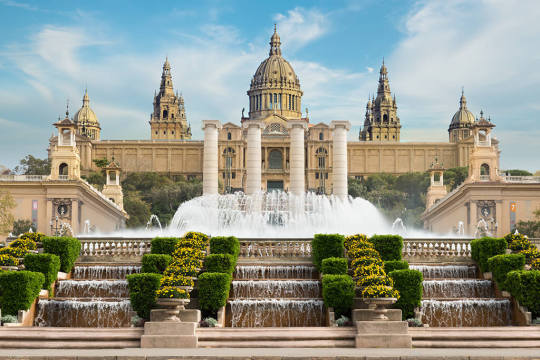
Barcelona Placa De Espanya, the National Museum with magic fountain in afternoon at Barcelona. Spain. Famous landmark in Spain.
It is located in the Plaza de Carles Buïgas, it is fascinating because of the play of lights and water. It is an incredible show. Enjoy it with your companions and live the best experience.
El Raval neighborhood
It is an authentic, fascinating, exciting and stimulating neighborhood. This is how tourists describe it.
It draws attention for being a place full of history, life and with full personality. Tourists come every day to visit the art studios, galleries and modern bookstores there. There is also the Museum of Contemporary Art to which it is essential to go. The neighborhood is central and you can get there from different parts of the city.
Since we tell you what to visit and what to do, go ahead and start your trip to Barcelona.
What did you think of our information?
from WordPress https://ift.tt/3cydPkK
via IFTTT
1 note
·
View note
Text
Ancient graves and a strange enclosure have been unearthed near Stone Henge
https://sciencespies.com/humans/ancient-graves-and-a-strange-enclosure-have-been-unearthed-near-stone-henge/
Ancient graves and a strange enclosure have been unearthed near Stone Henge

Archaeological work ahead of the construction of a controversial road tunnel beside Stonehenge has led to the discovery of ancient graves, including one with the remains of a baby dating back more than 4,500 years; a strange earth enclosure; and prehistoric pottery, among other buried treasures.
Some of the finds may have been used by people who built the mysterious Neolithic monument, and all of the discoveries show that the region was inhabited by different ancient peoples for thousands of years.
“Collectively, [the finds] allow us to build up an ever-more-detailed picture of what people were doing and how they were living in the area around Stonehenge,” Matt Leivers, a consultant archaeologist for Wessex Archaeology, told Live Science.
Related: In photos: A walk through Stonehenge
Before breaking ground on the $2.4 billion project to move a nearby highway underground, UK authorities have tasked Wessex Archaeology with making a thorough investigation of the land above it.
To do this, archaeologists walked the fields and created trenches and pits to test for archaeological remains and artifacts along the 2-mile-long (3 kilometer) strip where the road tunnel is planned, Leivers said in an email.
The team was guided by surveys from the air and used geophysical survey equipment to look for land disturbed by digging and structures in the distant past.
Although the UK government approved the controversial Stonehenge tunnel in 2020, the project still faces legal challenges; opponents say it will damage one of the world’s most precious ancient landscapes.
The latest finds were made during preliminary studies of the area, before 18 months of full archaeological excavations are expected to begin later this year, Leivers said.
Beaker graves
Foremost among the latest finds are several graves, unearthed just to the southwest of the Stonehenge circle, that are thought to be from the Beaker culture, which is named after their practice of burying the dead with bell-shaped pottery drinking vessels.
The Beaker people lived in Western Europe between 4,800 and 3,800 years ago, beginning in the Chalcolithic period when the first copper tools came into use.
In one of the graves, the researchers found a simple pot alongside the remains of a baby, though only the ear bones remain. Another pit nearby contains the remains of a woman who died in her 20s, her body crouched around a relatively ornate pot or beaker.
The research team also found a fragment of a copper awl or needle and a mysterious cylindrical shale object, perhaps part of a staff or club, in her grave.
Related: 7 bizarre ancient cultures that history forgot
Both graves are thought to be about 4,500 years old, which would make them about the same age as the smaller “bluestones” around and within the main circle of large sandstone “sarsens” at Stonehenge, Leivers said.
Buried caches of other ancient artifacts, including pottery vessels, flints, and deer antlers that may have been used for digging have also been found along the planned tunnel route.

(Wessex Archaeology)
Above: This strange cylindrical object, made of shale, was discovered in one of the ancient graves. It may have been part of a ceremonial staff or club.
“Stonehenge was built over a very long period of time; even individual phases of its construction could have taken years or decades to complete,” he said. “It’s entirely conceivable that the people who left those things behind or who were buried nearby had some role in Stonehenge’s construction.”
The preliminary investigations have also unearthed ditches to the southeast of the monument that could be part of an Iron Age fort known locally as “Vespasian’s Camp” – named after the Roman general, later emperor, who led a military force in the area during the Roman invasion of Britain after A.D. 43. Even so, there’s no evidence the fort had anything to do with him.
The archaeologists also found a pattern of buried ditches south of the graves that appears to form an enclosure. It seems to date from a period in the middle to late Bronze Age, after about 3500 years ago, when there was a settlement nearby, Leivers said.
He added that the team found large quantities of burned flint in the soil around it, perhaps indicating that some dirty or smelly activities took place there.
Stonehenge tunnel
Highways England – a government-owned company tasked with operating, maintaining and improving England’s motorways and major roads — contracted Wessex Archaeology to study the site of the proposed Stonehenge tunnel, which is designed to finally rid the famous Neolithic site of road traffic by rebuilding part of a nearby highway underground.
Stonehenge sits on otherwise vacant land, but the road has run only a few hundred feet to the south since the 19th century; cars and trucks on the road can be easily seen and heard from within the stone circle.
Opponents say the project will cause irreparable damage to the ancient landscape and result in the loss of thousands of prehistoric artifacts and archaeological remains. Among the proposed alternatives are bypasses to the south of the Stonehenge site that would remove most of the road traffic from the area.
Leivers said the tunnel that goes past Stonehenge is the least-interesting part of the project archaeologically, because the proposed method of boring the tunnel deep underground will have no impact on artifacts or remains near the surface.
“It’s only at the tunnel portals and along the road to the east and west that the archaeology will be affected,” he said
Instead, the full excavations due to start later this year will let archaeologists study a long transect landscape on both sides of the Neolithic monument.
“These are the parts that people don’t look at as often, away from the stones themselves, so it is a very valuable opportunity to place Stonehenge in its wider landscape context,” he said.
Related content:
Image gallery: Digging up at tomb at the Swedish Stonehenge
Photos: Ireland’s Newgrange passage tomb and henge
Photos: stone monument discovered in Scotland
This article was originally published by Live Science. Read the original article here.
#Humans
0 notes
Text
Behind the Fig Leaf—a Story of Sin, Censorship, and the Catholic Church

Charles Meynier, Statue of Mercury in a Landscape. Musée de la Révolution française. Photo via Wikimedia Commons.
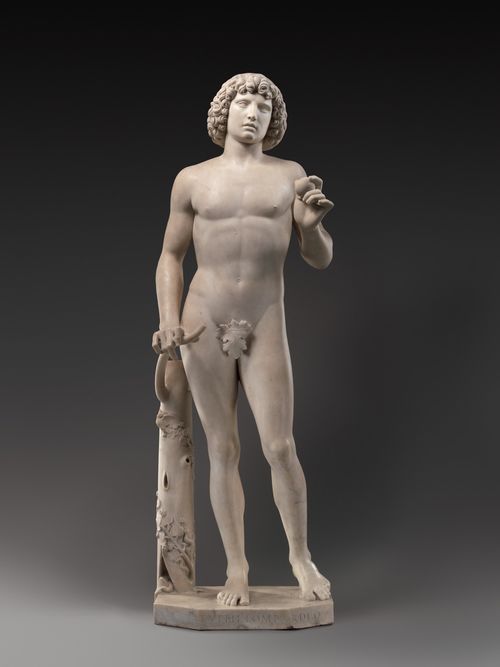
Tullio Lombardo, Adam, ca. 1490–95. Courtesy of the Metropolitan Museum of Art.
Consider the fig leaf: a little piece of foliage that’s shielded the genitals of famous biblical figures and nude sculptures for centuries. It’s a plant that’s become synonymous with sin, sex, and censorship. And in large part, we have art history—and the artists determined to portray nudity even when it was considered taboo—to thank for that.
Take Michelangelo’s famous sculpture David (1501–04), a muscular, starkly naked depiction of its namesake biblical hero. The work scandalized the artist’s fellow Florentines and the Catholic clergy when unveiled in Florence’s Piazza della Signoria in 1504. Soon after, the figure’s sculpted phallus was girdled with a garland of bronze fig leaves by authorities.
60 years later, just months before Michelangelo’s death, the Catholic Church issued an edict demanding that “figures shall not be painted or adorned with a beauty exciting…lust.” The clergy began a crusade to camouflage the pensises and pubic hair visible in artworks across Italy. Their coverups of choice? Loincloths, foliage, and—most often—fig leaves. It has became known as the “Fig Leaf Campaign,” one of history’s most significant acts of art censorship.

Michelangelo Buonarroti, David, 1501–04. Galleria dell’Accademia, Florence. Photo via Wikimedia Commons.

David, 1428-1432.
Donatello
Museo Nazionale del Bargello, Florence
But the fig leaf’s role in art history doesn’t begin with Michelangelo. The plant’s cultural significance can be clearly traced back to the tale of Adam and Eve. The duo, shamed by their nudity after eating from the tree of knowledge, “sewed fig leaves together and made themselves aprons,” as chronicled in the Book of Genesis. Early artistic depictions of the purported events show the once-nude figures sheathed in leaves that obscure their genitals, subtly representing original sin and a fall from grace.
This story—which became integral to Christianity’s teachings—communicated to the religion’s flock that nudity was shameful. By the medieval era, art commissioned by the Catholic Church mostly represented nudity as a sin; it was used to depict people who’d been sent to hell.
But that began to change in the 1400s, when Italian artists—thanks to a mounting interest in antiquities and excavation—rediscovered classical Roman and Greek art. Those ancient marble sculptures were forged in a time when the chiseled nude body represented honor and virtue, as opposed to immorality and vice.

The Creation of the World and the Expulsion from Paradise, 1445.
Giovanni di Paolo
The Metropolitan Museum of Art
This idea inspired artists like Donatello, who started making work that honored the nude body in all its glory. This was a novel idea in his hometown of Florence, where the Catholic Church wielded vast power. His bronze rendition of David (circa 1440) has been cited by scholars as the first known sculpture depicting a completely naked figure since antiquity.
Some of his artist-successors followed suit—namely, Michelangelo. Even after receiving criticism for his own version of David (rendered at a much larger scale and with more pronounced physical attributes than Donatello’s) in the early 1500s, he continued to incorporate nudity into his work.
But as Michelangelo’s artistic career developed, the Catholic Church’s crackdown on “lasciviousness” of all kinds also intensified. This had everything to do with accusations of corruption against the church being made by the Protestant Reformation and its leader Martin Luther. Fearful of losing its flock, the Vatican began ordering reforms across the church—including censorship of nudity in art.
Even so, Michelangelo received an abundance of commissions from Popes and other powerful clergymen during his life, most notably the ceiling of the Sistine Chapel. But sometimes, the Vatican called him out for crossing the line of decency. In the 1540s, some 40 years after his fiasco with David, he pushed his luck yet again—this time, for a wall fresco in the Sistine Chapel depicting the Last Judgement.
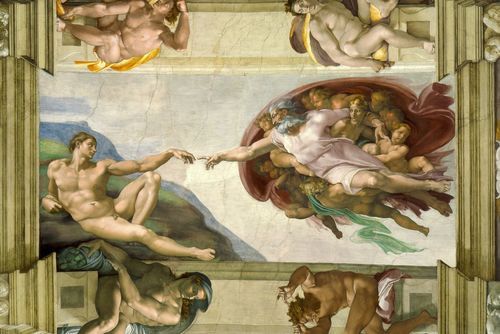
Creation of Adam, Sistine Chapel ceiling, 1511-1512.
Michelangelo Buonarroti
Sistine Chapel, Vatican
Traditionally, that subject had been illustrated with figures clothed according to their social rank, as art historian Peter Russell has pointed out. But Michelangelo stripped them all of both their status and clothing, showing everyone in the buff. Certain powerful figures in the Vatican weren’t happy. Cardinal Carafa and Monsignor Sernini called for the piece to be censored, while Biagio da Cesena, the Pope’s master of ceremonies, called the paintings fit “for the public baths and taverns” rather than a chapel. According to him, it was “disgraceful that in so sacred a place there should have been depicted all those nude figures, exposing themselves so shamefully.”
These passionate criticisms effectively launched the Fig Leaf Campaign, which was formalized in the Council of Trent’s 1563 decree banning “all lasciviousness” in religious imagery. Nude sculptures across Italy, and especially in Rome, soon sported carefully placed metal fig leaves. Some scholars have suggested that many of the plaster and marble phalluses were even chiseled off. As historian Leo Steinberg pointed out in his 1983 book The Sexuality of Christ in Renaissance Art and in Modern Oblivion, French scholar Montaigne wrote that “many beautiful and antique statues” were “castrated” in Rome during his youth by the order Pope Paul IV. (Believe it or not, some have rumored that a drawer of the castrated bits may still hide somewhere in the Vatican.)
The campaign didn’t spare paintings, either. Areas of Michelangelo’s Last Judgement (1533–41) deemed unsavory were painted over twice in the 1500s, and then again in the 1700s, with little swaddles and loincloths added. As Russell points out, a Mannerist artist named Daniele da Volterra was charged with making the additions, which won him the somewhat derogatory nickname “Il Braghettone” (“The Breeches Maker”).
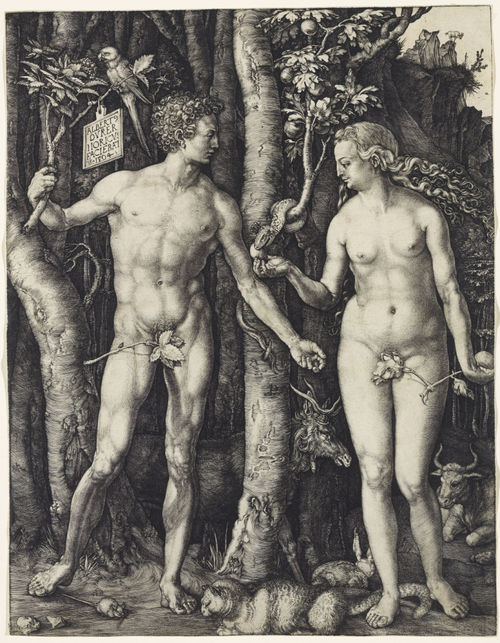
Adam and Eve, 1504.
Albrecht Dürer
Art Gallery of Ontario (AGO)

Masaccio, The Expulsion of Adam and Eve from the Brancacci Chapel. Fresco before and after its restoration. Photo via Wikimedia Commons.
The trend also transformed Masaccio’s 15th-century frescoes in Florence’s Brancacci Chapel. In the 1600s, an unknown artist painted fig leaves over its nude figures—namely, a depiction of Adam and Eve being ousted from Eden. And between 1758 and 1759, Pope Clement XIII swathed even more sculptures in the Vatican’s collection with fig leaves.
The fig leaf phenomenon spread beyond Italy’s borders, too. When the Grand Duke of Tuscany gifted a cast of Michelangelo’s David to Queen Victoria in 1857, a large leaf was promptly sculpted to “spare the blushes of visiting female dignitaries,” according to the Victoria and Albert Museum (V&A).
Luckily, the leaf was made so that it could be removed easily—and hang over the figure’s marble package without damaging it. Today, the sculpture stands completely nude in the V&A, while a small vitrine next to it houses the large leaf.
Over the last 40 years or so, Masaccio’s Adam and Eve (1427) and Michelangelo’s Last Judgement have also been restored. In order to honor the artists’ original visions (and reverse at least some of the damage inflicted by the Fig Leaf Campaign), some of the painted loincloths and leaves have been painstakingly removed from their original surfaces.
But still, censorship and the moral dilemmas nudity inspires still rage on. As late as 1995, the city of Jerusalem rejected a gift from Florence: another replica of Michelangelo’s David. After much back and forth, they finally accepted the influential sculpture—but only after shielding its loins with underwear.
from Artsy News
6 notes
·
View notes
Text
Italy: like putting on an old boot

Since losing my passport in Madrid, I had a two-week window before our next trip to get a new one. I ended up going to the US Consulate in Amsterdam, which was an adventure all in its own. If you picture the DMV, but on ‘roids, that is about the experience of applying for a passport abroad. After getting a new passport photo, I got to wait outside the building on the literal coldest day of the year for an hour before being ushered through security in order to wait for another two hours interspersed with quick trips up to the counter to explain that I don’t know what happened to my passport because I lost it and then being chastised for losing my passport because I must look too young to possibly be able to comprehend the gravity of importance such a document. Oh, and I had to pay $140. But luckily the US is very efficient at printing rush order passports and it arrived the following Friday, just in time for our trip to Rome. But of course, there would be one more hiccup in the story- the city lost power on Friday afternoon when I planned to pick up my passport. So the Consulate did not have power… or at least the backup generator did not power the whole building. Luckily, the guards were able to just grab the newly printed passports (I was not the only one trying to pick one up that day), and I was on my way.
Once we got into Rome, the same feeling of joy I had from my first visit washed over me, and I think I had a smile on the whole weekend. Rome is a huge city, so it is crowded, busy, smelly, full of trash, a bit rundown, etc. However, I love it for the amazing art, culture, and food. What can I say, Rome was the center of Western culture for much of history, and for much of my Catholic upbringing (and my brief stint as a Latin nerd), so it generates some degree of awe.

We threw in our coin, so I guess we’ll be back again
We checked into our hotel, which was across from some state building. When checking us in, the clerk said if we take photos from the window, the state employees might think we are spies and send people over to the hotel to investigate. I’m pretty sure he was joking? Mariah may have tested the theory the next evening after a few drinks.
We went to dinner that evening and tried some authentic Roman dishes, including an artichoke sampler platter. To be honest, steamed artichokes and butter was one of my sister’s favorite meals growing up, but they were never one of mine. But the Roman style artichokes blew me away. They are originally prepared by Jewish immigrants, but were quickly adopted by the Roman locals, so much so that Rome is one of the largest artichoke producers in the world. The Jewish version is lightly battered and fried, while the Roman version is steamed, and both are incredible. I also had pasta al’amatriciana (tomato sauce with pork cheek) and Mariah had ravioli before we split an incredible tiramisu. Before calling it a night we walked over to the Trevi fountain and threw in a coin. I guess we’ll be back one day.

Magical artichokes

We had some super delicious pastries in our hotel the next morning before heading to St. Peter’s Basilica. After taking some initial photos, I was talked into upgrading our museum tickets to a guided tour. While this is expensive, it is worth it- the guide is great, but you’re really paying to skip the 3+ hour line to see the basilica from the museum (and Sistine Chapel). We learned why the Vatican is its own country (long, convoluted story short- the modern church never wanted to join the united Italy, and the arrangement stuck- helps when you have your own private army). The Vatican treasures are as incredible as they are extensive. We saw Greek/Roman gods, human personifications of the Tiber river, supposed tombs of Helena and Constantina (mother and daughter of Constantine), maps of the world, paintings and tapestries for days, and a Roman Zach Galifianakis. But this was all a lead in to the Sistine Chapel, of Michelangelo fame. Of course there are no photos, but the Creation of Adam and the Last Judgment are every bit as amazing as hyped. We then fast tracked to the staggeringly beautiful St. Peter’s basilica. We saw the tombs of the popes (St. John Paul II has his own chapel on the main floor) and the Pieta, but my favorite is the altar from Bernini. Just look at the pictures.

St. Peter’s Basilica

Is that you, Zach?
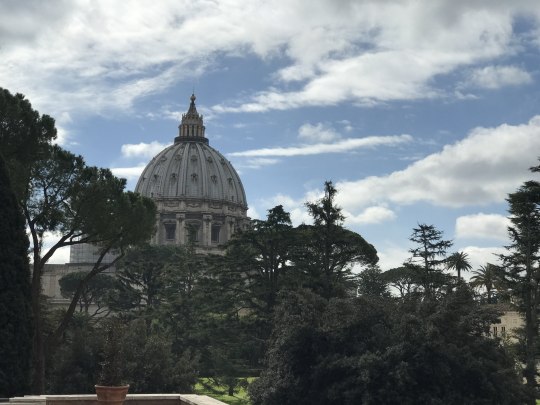

Pieta
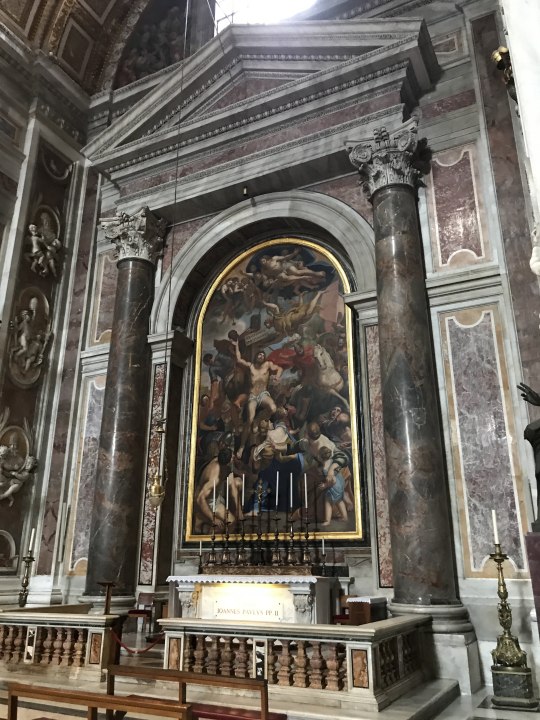
Pope JPIII!
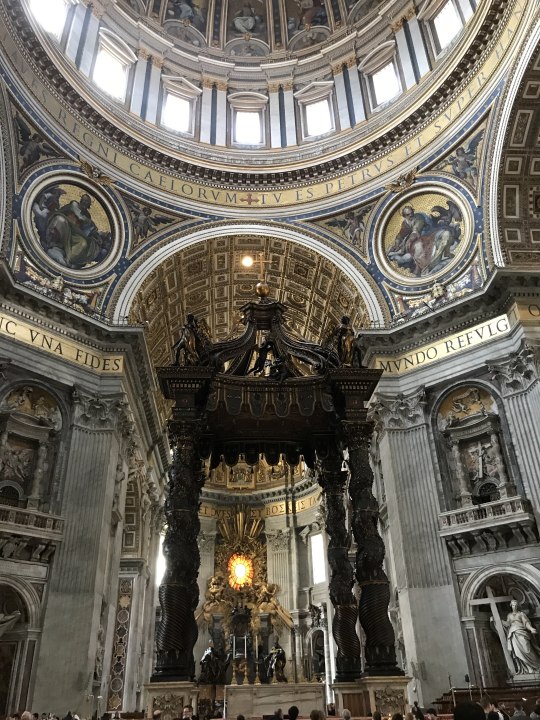
Bernini’s altar
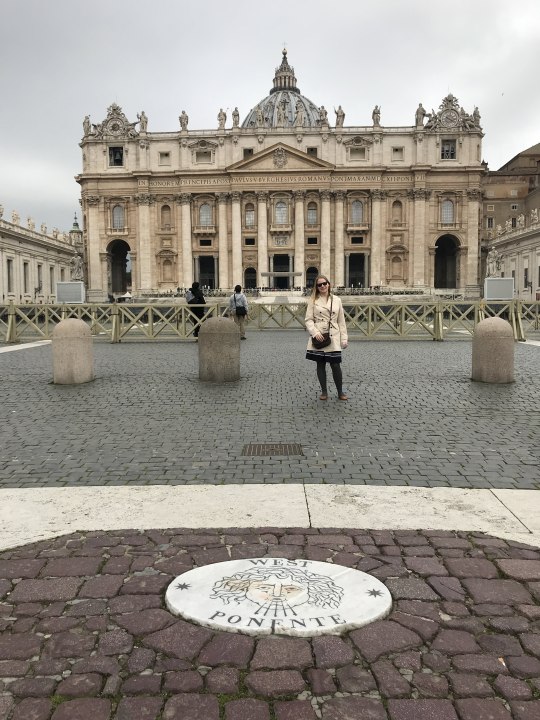
After a lunch of arancini (rice balls- I might not be able to eat the ones at Cinzetti’s ever again) and cacao e pepe (literally cheese and pepper- basically Italian mac ‘n cheese for adults), we set out to explore the city. We saw Castle Sant’Angelo (the pope fortress/Church of Illumination), Piazza Navona, The Pantheon, the Spanish Steps, and so much gelato. Eventually, we met some friends who also happened to be in Rome, and had dinner and a shared a few bottles of wine.

Gelato number two - sadly, we have no evidence of number one

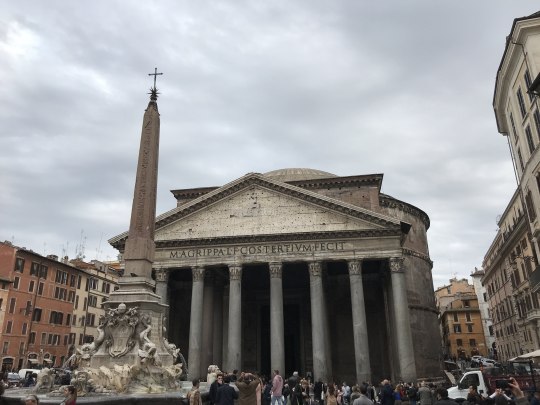
The Pantheon

These two like their Italian wine
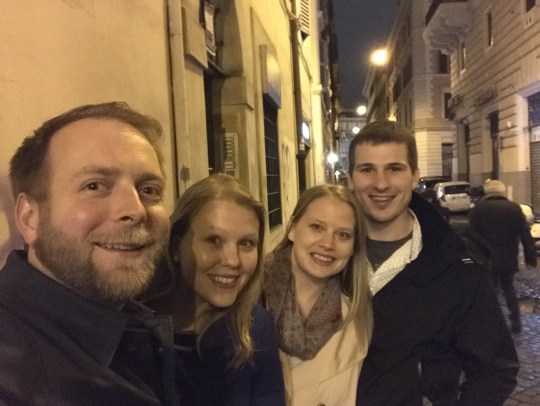
Brent and Christine happened to be in town
The next morning, we packed in some more sightseeing with the Altar of the Fatherland (Mussolini funded statue dedicated to the united Italy), Palatine Hill, the Capitoline Wolf, and Turtle Fountain (which does not have live turtles in the fountain). We ventured to the Jewish quarter of town, and had more marvelous artichokes, pasta, and possibly some of the best table bread ever (I had to take a picture it was so good). We went to a beer bar and enjoyed some brews (Italy has some good breweries), before going over to the hip Trastevere neighborhood and having more food (including a tremendous prosciutto sandwich which I would not shut up about, more arancini and a pizza) and beers. We needed to get back to the hotel, and decided to walk by the Colosseum and the Circus Maximus on the way. Unfortunately, the sky opened up and we were drenched in ten minutes… so we made a quick pit stop for more gelato to let the rain pass. There are worse things.

Remus and Romulus!


No live turtles


Mariah’s happy place (Gelato three of four?)
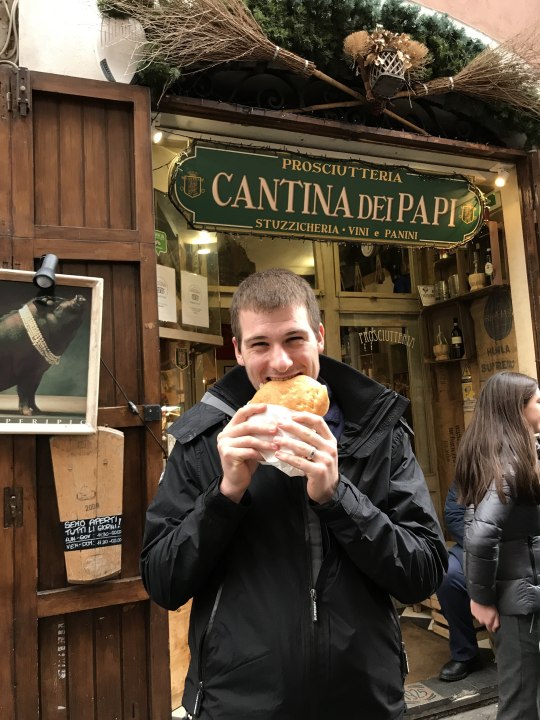
...and mine (prosciutto sandwich)

Sometimes I can get her to drink a beer

But it generally involves bribery with margherita pizza

Aaaaand it’s pouring outside

Rain keeps the tourists away - most of them, anyways
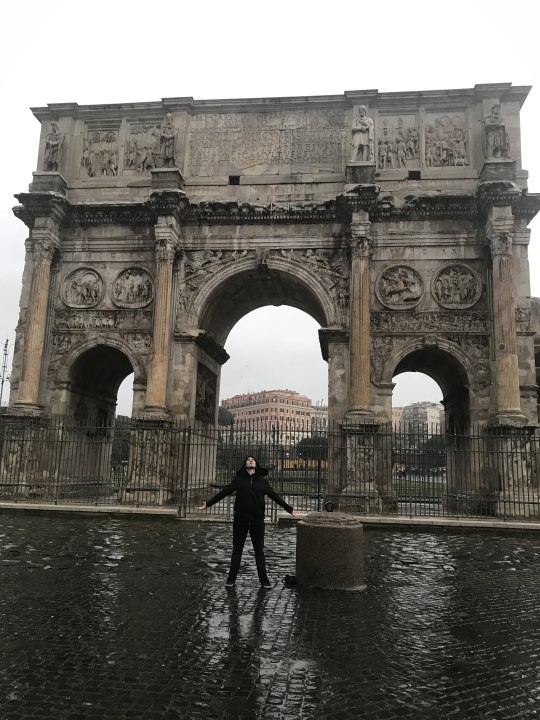
Are you not entertained?
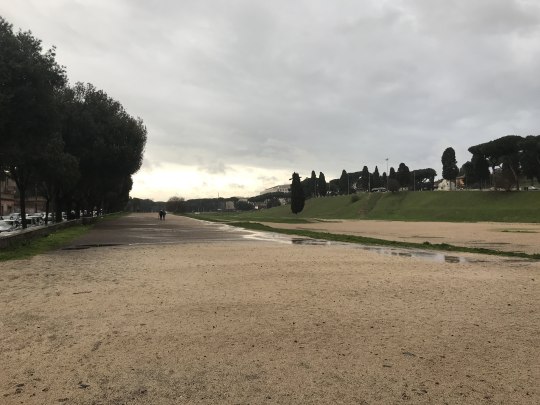
All that’s left of the Circus Maximus
We packed a ton into our Rome weekend, so in Florence (the following weekend) we were a bit more relaxed. We arrived late on Friday so our adventure really just started on Saturday morning. Our first stop was to the Cathedral of Santa Maria del Fiore, which is better known for ‘il Duomo,’ or the massive dome that adorns the church and dominates the city skyline. It was a fairly easy climb, but the vertigo is real when you are on the interior of the church and looking down. But you are rewarded with amazing art reminiscent of Dante’s Inferno (Florence is his home town, btw) and panoramic views of the city.


I hope you’re not claustrophobic... or afraid of heights!



Afterwards, we put our name down at Trattoria Mario for lunch, and killed some time at the markets before our table was ready. I don’t think you can see more leather outside of a Vegas S&M convention, but to be honest it is really cool. We stopped into a market and bought some pastries- creampuff for me and a chocolate cookie for Mariah- to hold us over. Luckily we did not have to wait for lunch long. Trattoria Mario is regarded as the best restaurant in town, and is only open for lunch. The place is tiny, and you will be seated at a two-person table with two other people and sit on stools that are made for toddlers. The bread is disappointing, but the food is marvelous. The place is meat-centric, and their specialty is the classic bistecca alla fiorentina, which is a super thick, bloody porterhouse steak. The frites were good too.


After lunch, we crossed the famed Ponte Vecchio to the other side of the city. We walked up to the Piazzale Michelangelo for more magnificent views of Florence. We walked along the river and stopped by a small tea shop, and sampled some of their goodies. We walked out with some good stuff, and an aspiration to become a tea sommelier and to (keep) travel(ing) the world. We had a rest at a dessert shop before finding dinner (easier said than done, since our first choice for dinner just never opened the restaurant for service- no notice posted physically or online), and closed the night with more beers. It was a bit early, but we have been traveling a lot.
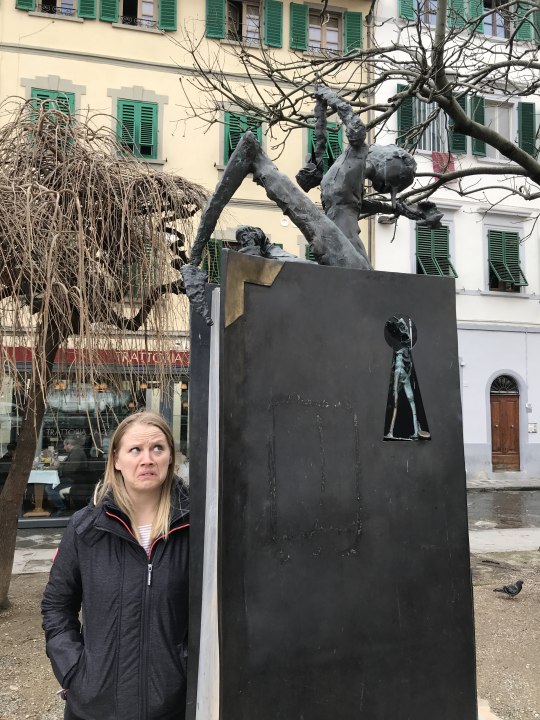
It was a pretty creepy sculpture...
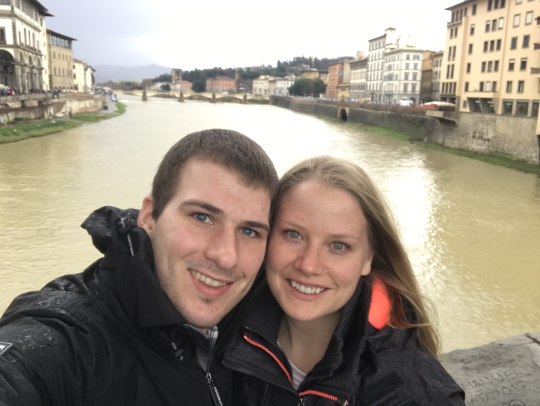


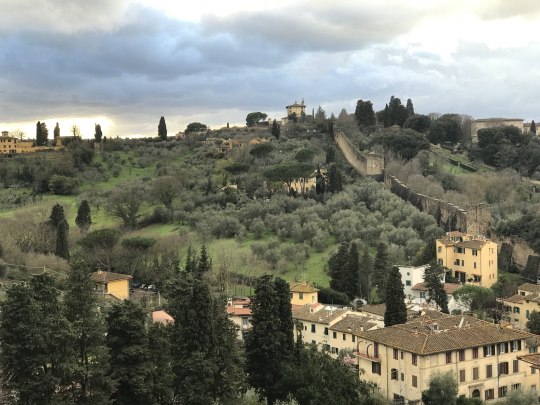
We slept in, but woke to go to the Galleria dell’Accademia, which is a museum that has nothing of much significance except for a little piece from Michelangelo called the David. Before seeing the main event, we did explore some of the other parts of the museum, including the musical instruments and some religious paintings. Two asides- first, we saw a pair of little girls (say seven) on a private guide with their parents looking at the musical instruments and throwing out some serious knowledge of the Medicis and the Renaissance art movement (the girl was a self-proclaimed art history buff, and I believe it!). Second, some of the art made to explain the dogma of Christianity is as bizarre (though simultaneously stylish) as the Thai paintings we saw in Bangkok. Seriously, if I didn’t have knowledge of the immaculate conception, I would have thought Christians believed that an old cloud god shot pigeons at a sleeping woman while some creepy dude with wings looked on approvingly.

But onto the David. It is every bit as masterful as everyone says. The story is unbelievable too. Just think, some 27 year-old just said, ‘hey, can I use that chunk of marble over there? I wanna make something for you.’ And then the Florentine people were graced with one of the most incredible works of art in history is ridiculous. Michelangelo was TWENTYSEVEN!!! Oh, and he made the Pieta before that (pictured above, from Rome).

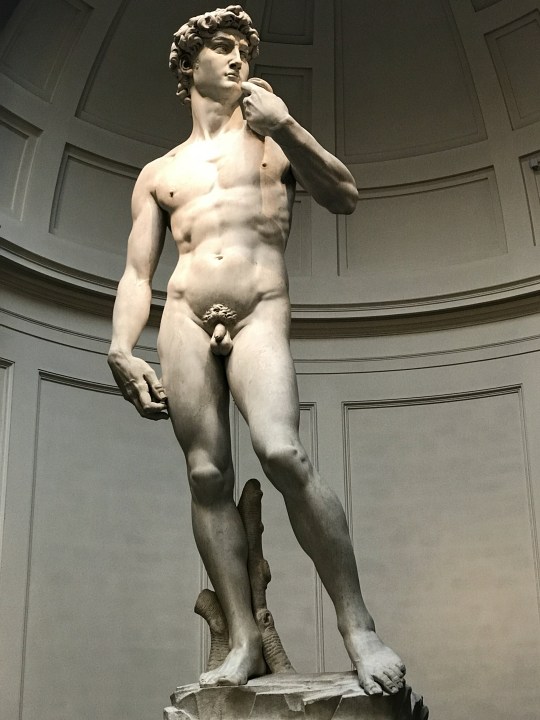
Just look at him!
Afterwards we just relaxed. We had some pizza, coffee, macarons and beers. I did grab a snack- a lampredotto. There was a stand just outside of our hotel which filled up during lunch with locals, so I figured I’d try it. The sandwich is made from spiced lamb intestine, and it’s pretty good. I mean, it’s no prosciutto sandwich, but its good. We did make our outside the Uffizi gallery before leaving, and took in some of the city’s most famous patrons before saying goodbye.


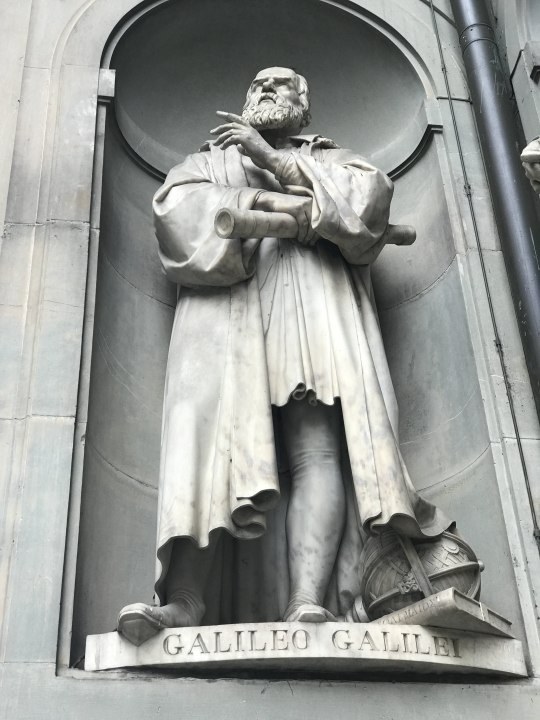
I throw my hands up in the air sometimes... singing ayo...

NBD, just our country’s namesake

Last minute snack
Italy is superb. It is a country with so many different layers of nuance and culture. Sometimes I feel people boil it down to pizza and statues, but it’s so much more. Each region, from Rome, Florence, Venice, Naples, Sicily, Milan, etc. is so different from the next. The food, outside of the tourist traps, is every bit of what makes Italian fare heralded as some of the world’s best. The culture and history is dense and rich- just think, Rome was the center of the western world through two different points of time for two different reasons. Sure, Italy has its problems and frustrations like we all do, but it is a country I will enjoy returning to time and time again.
2 notes
·
View notes
Text
10 Things to See and Do in Girona, Spain
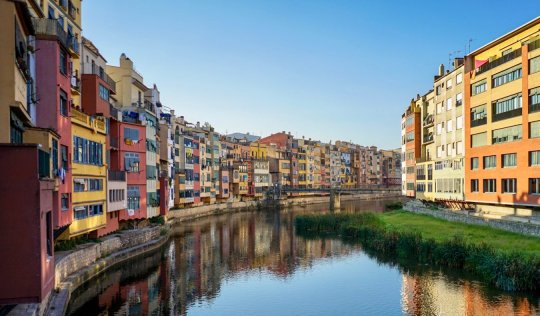
Posted: 04/20/20 | April 20th, 2020
From lively Barcelona to island paradises like Mallorca and the Grand Canaries to the historic cities of Andalusia, Spain is awesome. It’s one of my favorite countries in the world and one of the most budget friendly in Europe.
But there is one city that captures my love of the country the most: Girona.
Home to just over 100,000 people and only 45 minutes from Barcelona, Girona is home to a well-preserved Jewish quarter, ancient winding streets, and a walkable medieval city wall. Throw in lots of green space, colorful buildings, and perfect weather, Girona is one of my favorite places in Spain.
Girona is more famous today thanks to Game of Thrones being filmed there but this tiny city only 30 minutes from Barcelona remains somewhat off the beaten track and free of the crowds that make Barcelona unbearable sometimes. There’s good food, lots to do, and lovely people. I can’t sing the city’s praises enough.
To help you make the most of your trip, here are my top things to see and do in Girona:
1. Explore the Old Quarter
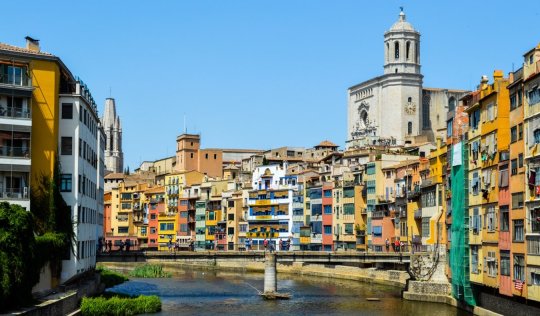
Girona’s Old Quarter (Barri Vell) sits beside the River Onyar. This neighborhood is home to some of Girona’s most popular and well-preserved historical sites. Filled with medieval architecture, colorful old homes, and picturesque bridges but without the crowds of Barcelona, this is my favorite area to wander around.
You can explore it yourself and enjoy getting lost, but before also check out the tours Girona Walks offers, so you can learn more about this section of town and how it has evolved over the centuries.
2. Marvel at the Cathedral of Girona
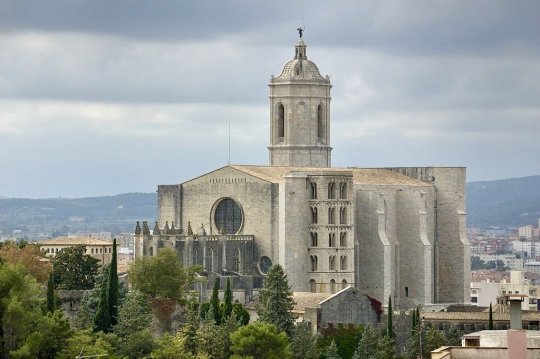
Built between the 11th and 13th centuries, the Cathedral of Saint Mary of Girona towers over the city. It’s the second widest church in the world, almost 23m (75 feet) across — only St. Peter’s Basilica in the Vatican is wider. (It was also featured in Game of Thrones!)
The interior isn’t particularly ornate and has a bit of an austere feel to it, but it’s peaceful, and there’s a lot of information and a good audio guide available.
Plaça de la Catedral, +34 972 42 71 89, catedraldegirona.cat. Open 10am–6:30pm, April–June; 10am–7:30pm, July–August; 10am–6:30pm, September–October; 10am–5:30pm, November–March. Admission is 7 EUR ($7.70 USD). Dress respectfully, as it is a place of worship.
3. Tour the Arab Baths
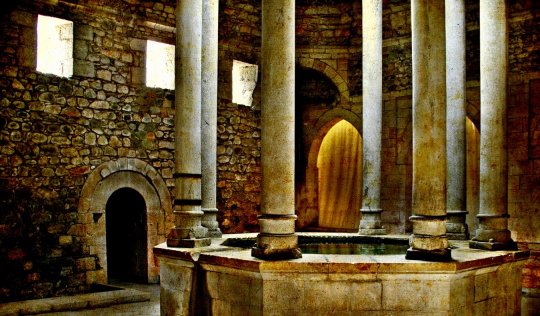
These preserved public baths were built in 1194. Their Romanesque style was inspired by similar Roman and Arab baths and was built in response to ancient Girona’s growing population and the need to improve hygiene.
While you can’t actually use the baths, you can take a self-guided tour to see what bathing was like in the Middle Ages. The building is covered by a large vaulted ceiling and includes a cold-water bath, a hot-water bath, and changing rooms.
Carrer del Rei Ferran el Catòlic, +34 972 21 32 62, banysarabs.org. Open Monday–Saturday 10am–6pm and Sundays 10am–2pm. Admission is 2 EUR ($2.20 USD).
4. Stroll Along the Eiffel Bridge
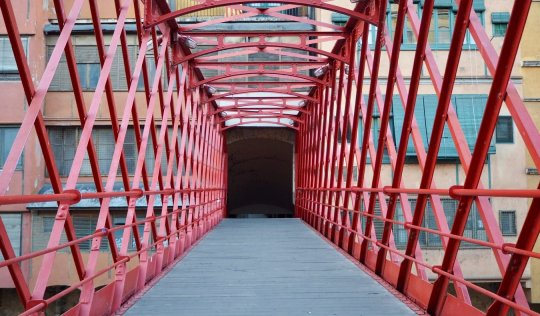
The Palanques Vermelles Bridge, also known as the Eiffel Bridge, was built in 1827 by Gustave Eiffel just before the construction of his most famous work, the Eiffel Tower. Located over the Onyar River, it’s a great place to get some pics of the Old Town’s colorful buildings. I try to cross this bridge often, simply because the view is so nice!
5. Learn Something New at One of Girona’s Many Museums
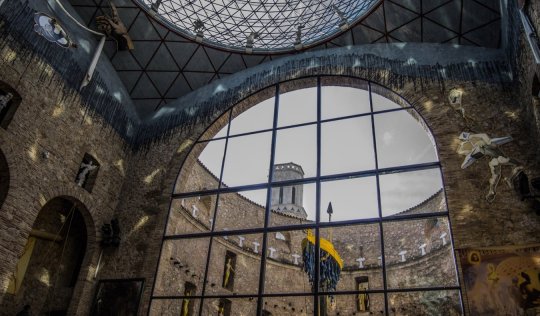
For a small city, Girona is home to quite a few museums and art galleries. Here some I think you shouldn’t miss:
The Jewish History Museum – The museum is made up of 11 exhibitions that explore the history and culture of the region’s Jewish community, which was one of the biggest in the area. Admission is 4 EUR ($4.40 USD).
Girona’s Art Museum – This has the region’s largest collection of Romanesque and Gothic art (over 8,000 items). It’s huge! Admission is 6 EUR ($6.60 USD).
The Cinema Museum – This museum covers the history of cinema and is filled with old posters, films, and movie equipment. It also hosts regular events and movie screenings. A must for movie buffs! Admission is 5 EUR ($5.50 USD).
The Girona Archaeology Museum – This is one of the oldest museums in the region and boasts a collection of archeological finds from pre-history all the way to the Middle Ages. Though small, it goes into some good detail about the area. Admission is 6 EUR ($6.60 USD).
6. Tour the Basilica de Sant Feliu

This historic Gothic cathedral is eye-catching and hard to miss. It almost looks like a castle. Its bell tower is visible from most spots around Girona, so it’s never far from view.
It was the first cathedral in Girona and remained the only one until the 10th century. Beyond the impressive architecture, the cathedral is home to historic works of art, including a 14th-century sculpture of Christ, as well as Christian and non-Christian sarcophagi that date back to the fourth century.
Plaça de la Catedral, +34 972 427 189, catedraldegirona.org. Open Monday–Saturday 10am–5:30pm, Sunday and holidays 1pm–5:30pm. Admission is 7 EUR ($7.70 USD).
7. Visit the Monastery of Saint Daniel

Founded in the 11th century, this monastery located on the outskirts of town was created with the intention of establishing a nunnery in the region. While the abbey is no longer in use, you can still visit the church and the cloister. Inside, you’ll find Saint Daniel’s sepulcher, rumored to house the remains of the saint himself. The architecture is a mix of Romanesque and Gothic, with additions from the 12th and 15th centuries.
The monastery is surrounded by the Valley of Sant Daniel, a lush green space with lots of shade and picturesque natural springs.
8. Walk Atop Girona’s Ancient City Wall

Dating to Girona’s medieval past, these ancient walls were partially destroyed in the 1800s to make way for city expansion. Fortunately, many of the missing pieces have been recovered or reconstructed in recent times. Taking a stroll atop them offers an unbeatable view of both the city and the countryside’s rolling hills. Plus, they’re free!
9. Stroll La Rambla de la Llibertat

Lined by gorgeous neoclassical, baroque, and Gothic buildings, this is the main pedestrian street in town. The street dates back to 1885 and is full of shops, cafés, and restaurants. There’s also a flower market on Saturdays.
10. Indulge at Rocambolesc

This is one of the best gelaterias I’ve ever been to! Owned by world-class chef Jordi Roca, it’s a great spot to (over)indulge in delicious ice cream and gelato topped with berries, cotton candy, fruits, whipped cream, chocolate sauce, fudge, and so much more. I go there every time I visit (usually multiple times). It’s amazing and worth every euro!
50 Carrer de Santa Clara, +34 972 41 66 67, rocambolesc.com. Open Sunday-Tuesday from 11am-9pm and Friday-Saturday from 11am-10:30pm.
***
Girona’s long history, a unique and rich culture, so much delicious food, and stunning architecture. A lot of people make it a day trip from Barcelona but I’d recommend spending at least one night here. There’s plenty to keep you busy. I first visited here in 2012 and have been back a total of four times. I love Girona. Most people do. Make it part of your next trip to Spain.
P.S. – We’ve launched a new Patreon where you can get stories and tips I don’t share on this blog, a private Facebook group, phone calls with me and the team, live Q&As, postcards from the road, signed copies of my books, and much more! Click here to get access!
Book Your Trip to Girona: Logistical Tips and Tricks
Book Your Flight
Find a cheap flight by using Skyscanner or Momondo. They are my two favorite search engines because they search websites and airlines around the globe so you always know no stone is left unturned.
Book Your Accommodation
To find the best budget accommodation, use Booking.com as they consistently return the cheapest rates for guesthouses and cheap hotels. You can book your hostel with Hostelworld as they have the most comprehensive inventory. My favorite place to stay in Girona is:
Can Cocollona – This is the best hostel in the city. It’s social, includes free breakfast, and the beds are super comfy!
Don’t Forget Travel Insurance
Travel insurance will protect you against illness, injury, theft, and cancellations. It’s comprehensive protection in case anything goes wrong. I never go on a trip without it as I’ve had to use it many times in the past. I’ve been using World Nomads for ten years. My favorite companies that offer the best service and value are:
World Nomads (for everyone below 70)
Insure My Trip (for those over 70)
Looking for the best companies to save money with?
Check out my resource page for the best companies to use when you travel! I list all the ones I use to save money when I travel – and I think will help you too!
If you want to do a bike tour, check out Fat Tire Tours. They offer tours that are fun and informative. They’re my favorite company to go with. They even have some food-themed tours too.
Looking For More Information on Visiting Spain?
Check out my in-depth destination guide to Spain with more tips on what to see, do, costs, ways to save, and much, much more!
Photo Credit: 3 – Doronenko, 4 – Toni Verdú Carbó, 5 – Teresa Grau Ros, 6 – stefano Merli, 7 – Josep Maria Viñolas Esteva, 8 – Montse Poch, 9 – rivigan, 10 – Joan, 11 – Jordi Sanchez
The post 10 Things to See and Do in Girona, Spain appeared first on Nomadic Matt's Travel Site.
from Nomadic Matt's Travel Site https://ift.tt/2Kjnk9t
via IFTTT
0 notes
Text
Day 4: Florence, Part 3 - New Year’s Eve 🎆
I wake up this morning exuberant despite not sleeping for as long as I would have liked. Breakfast in the hotel restaurant features just about anything you can think of: pancakes, eggs, bacon, sausage, fruit, yogurt, cereal, salad, roasted tomatoes, pastries, exotic fruit juices, and on and on. The coffee is especially good and much needed.
Today‘s itinerary consists of a couple art galleries: le Gallerie dell’Academia and le Gallerie Degli Uffizi. We start the morning with a 20-minute walk to get to le Gallerie dell’Academia, famous as the home of Michelangelo’s David. A new local guide, Alissandra, meets us at the hotel. She and I talk quite a bit over the course of the morning and I really enjoy her; we’ll see a bit later on that she has some spunk when it comes to dealing with other tourists and groups trying to encroach on our space or interrupt her presentation.
We pass through some familiar areas on the walk to the gallery, heading further north of il Duomo than we’ve been so far. We pass by the former Medici mansion on the way, and Alissandra tells us about how the Medici family—one of the major ruling families of Florence throughout the last 500 years—were first merchants, then bankers, and then politicians, quietly amassing wealth and power over generations. (Many members of the family are buried in the Medici chapel in the nearby church of San Lorenzo.)
The line of people waiting to enter the gallery without a reservation stretches around the entire block. We wait for just a few minutes before entering—one of the advantages of traveling with a group and having everything booked in advance. We stop briefly in one of the first rooms so Alissandra can tell us a bit about Michelangelo’s sculpting method, which deviated in some significant ways from his contemporaries. Notably, Michelangelo did not make plaster prototypes for his sculptures, and he was incredibly particular about the marble he used (so much so that he had a select group of men at the marble quarries who were allowed to handle his marble).
We round the corner into a wide corridor and there is David, standing 15 feet tall at the end of the long room under a frosted glass dome. There are crowds at his feet on all sides. Alissandra tells us that Michelangelo was originally commissioned to create a statue of David to stand on a flying buttress atop the cathedral, but the project was scrapped due to expense before Michelangelo finished his sculpture. This explains some of the strange proportions of David’s body: The hands and head are subtly larger than normal so they could be seen in proper proportion from far below. Given his intended placement high above the streets of Florence, it’s also strange that David’s features are so detailed—shadows in his pupils; veins in his neck, arms, and hands; creases on his leather sling; cuticles on the fingernails and toenails; exquisitely detailed musculature. This level of detail would never have been seen, but this perfectionism is part of Michelangelo’s signature style. David took two years to complete, and Michelangelo was just 26 years old.
We examine David from all sides as Alissandra tells us more about him. Frankly, I’m enamored. He is strikingly beautiful. Magnetic. I can’t look away. I switch lenses to get a few better close-up shots, trying to capture all this in my memory.
It almost seems silly now to go to another art gallery this afternoon, since I know nothing I see will live up to David’s perfection. After some more browsing, we walk a few minutes to Piazza Della Signoria where we break for lunch. Our group heads across the Arno river to find lunch. Problem is, most places aren’t serving food until noon and it’s about 11:30. We do find a restaurant with a lovely four-course breakfast and have a late brunch overlooking the river, directly across from the Uffizi. It’s quite a bit less tourist-y on this side of the river, and there are far fewer people in the streets.
We meet back at Piazza Della Signoria after lunch, near a copy of David that stands where the original stood for several centuries in the open air. The Uffizi Galleries are just off the square. “Uffizi” means “office,” since this building was originally constructed as government offices. The courtyard at its center houses statues of many of the great artists whose work is featured within. We enter through security and climb several flights of stairs to the top floor where the exhibits live in a series of large rooms off a U-shaped corridor lined with dozens of Greek and Roman sculptures. The exhibits are arranged in chronological order, beginning with Medieval art and the early Renaissance continuing through the eighteenth century.
I’ll be honest: Not many of the exhibits were very compelling to me, as beautiful as I suppose they were. If I had a dollar for every depiction of the Annunciation or Madonna with Child on display, I’d probably have been able to pay for admission to the gallery. There are a few pieces that I’m excited to seek out, most notably Botticelli’s Birth of Venus. The sculptures in the corridor get most of my attention, since Greek and Roman mythology and sculpture as a medium are more interesting to me than Medieval Christianity. The ceiling in the corridor is divided into a seemingly endless series of uniquely decorated panels, some of which feature landmarks or historical figures from Florence. It’s rather warm up here, and my morning coffee is wearing off, so my attention and good humor begin to wane.
Sylvie and I get separated from Miranda and Cari somewhere near the exit, and we head back to the hotel to rest and regroup for the evening, making a stop to pick up a couple bottles of wine on our way. Back at the hotel, I sort through my photos of David and nap for about an hour before our appointed meeting time with friends to kick off our New Year’s Eve celebration.
My hotel room becomes our pregame spot, since the room is nice and our balcony is plenty roomy. Friends begin rolling in, each with their own bottle(s) of wine or bubbly. We drink some wine and talk and laugh while Italian music videos play on TV in the background. Having sufficiently inebriated ourselves, we head out to the city center. Our final group is myself, Miranda, Sylvie, Micah, Emily, Lauren, Ted, Sylvia, and Lizzie.
To ring in 2020, there are evidently 20 different celebrations happening in 20 piazzas across the city, each featuring different music or entertainment. We start at Piazza del Duomo outside the cathedral. We get pizza to go from a small restaurant and make friends with a few Italians while waiting in line for the restroom downstairs (they speak no English, which adds to the fun). A crowd is gathering in front of the cathedral where a gospel choir begins performing shortly. We’re in amongst the crowd now, and we stay to enjoy their first two songs.
From there, we walk to Piazza Della Signoria, making a couple stops along the way to sing along to some American music playing in the streets and to grab a round of beers from a small dive bar. There’s plenty of room in the piazza for us to get right near the front of the stage under the fortress at the south corner of the square. Many more people will arrive over the next hour or so leading up to midnight, and we’ll soon move further back since the speakers are very loud so close to the stage. There is a light show set to house music happening on the facade of the fortress. A projector from the top of the building across the square beams an elaborate display onto the facade, weaving the windows and lines of the bricks into a kaleidoscope.
The light show continues until 11:00pm, when a cadre of acrobats take the stage, dancing and contorting their bodies in the air using ropes, hoops, silks, and all manner of harnesses. A few minutes before midnight, emcees greet the crowd and start the countdown. The piazza is packed now. As 2020 officially arrives, locals are passing out cups of champagne seemingly conjured from nowhere. After joyfully greeting those around us and taking a few photos, we move toward the hotel, migrating slowly with the crowd. In Piazza Della Repubblica (and everywhere else along the streets) there are firecrackers and small fireworks going off among the masses of people.
Back at the hotel we find a few choristers and Dr. Diddle, who were partying in the lobby with some champagne. (Evidently a few folks weren’t comfortable being out on their own tonight.) We wish everyone “Buon Anno!” and head upstairs for bed. By now it’s 1:00am, and I clean up the remnants of our earlier revelry and pack up my luggage in preparation for our departure to Venice in the morning.
Steps: 17,447
Miles: 9.0
0 notes
Text
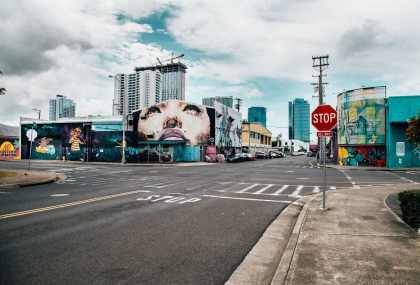

Honolulu is famous for its golden sands, Waikiki and its tourist boulevard. In contrast, the campus district of the city is famous for a different kind of attraction. Here you will not find gaudy Hawaiian souvenir shops or hordes of tourists unless they’ve gotten lost, but you’ll find a thriving urban art scene with colorful street scenes that are so large they stretch across walls and sometimes entire sides of buildings. I like to stroll around with Shana in this harbor and industrial district of Honolulu to see the amazing, oversized colorful art paintings that adorn the old halls and commercial buildings. This area has an exceptional characterizing flair! I love this lodging with the graffiti! In Europe one usually only encounters writings on house walls, where in the USA, San Francisco, New York already speaks of paintings, is spoken here in Hawai’i with their special peculiarity of works of art. With the lighting of the sunshine and the contrast of the blue sky, the perfect art also has a striking effect.
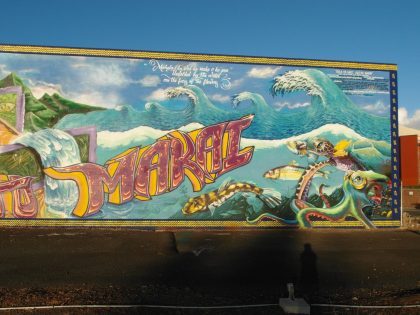
Water writes; Honolulu ©Foto Gérard Koch-2012
Graffiti existed in ancient times as in ancient Egypt, Greece, the Roman Empire, the Aztecs, Mayans and many other rich on this earth. Graffiti is used to decorate the walls or other surfaces with painted fonts or drawings with an artistic expression without permission and audience.
Conversely, it is in Hawai’i, where the expressive creations will be presented to the public and the public after major public events. Behind these works of art, up to a year of hard sensitive work, development and preparatory work, collection of ideas take place, until literally the first paint spray cans can be shaken and opened. Some discussions take place not only among the artists as the story is to be told in the picture, also with schools, communities and the contractor. All of the paintings include Hawaiian culture and ancient history to exhort us to think and think about a time-relevant topic that occupies society on the ground. The Hawaiians are very strongly associated with nature which is reflected in the pictures.

Kaimuki High School, Honolulu ©Fotot Gérard Koch – 2017
To learn more about this work and the artwork, Shana and I were invited to an interview at Kaimuki High School, Honolulu, with world-renowned artist Estria Miyashiro.
youtube
In 2012, where I spent my holidays in Hawaii, this artist was still completely unknown to me. By coincidence, when Shana and I made our purchases in this industrial district, I saw parking by the car, a huge painting on a whole house wall. Immediately I had to pull the camera out of the bag to capture this experience. In order to photograph the entire work, I would have to step on the sealed company premises, if there would not be a security guard there. Without further ado, I went to this guard and asked him if I could go to the grounds. He just waved to me to go in and snap my photos, turned around at the same time and ran away from me. I took the time to look at the painted wall of the house.

Water writes, Honolulu ©Foto Gérard Koch – 2012
Back home in Switzerland, I looked at the photos, which gave me no peace to learn more about it. So I started my research, watched Hawaiian music videos on YouTube and saw more and more such artworks until Shana sent me the breakthrough with a web link.
youtube
Estria Miyashiro is an internationally recognized muralist, co-founder and creative director of the Estria Foundation (TEF), a non-profit organization that uses public art to transform communities and raise awareness of important local issues. TEF creates innovative public art projects and educational programs that use public art as a catalyst for community engagement.
Along with numerous mural paintings, Estria has recently launched the international mural series WaterWrites and directed the Estria Battle, the leading US graffiti contest. His latest project, MeleMurals, is a series of 20 murals on the Hawaiian Islands about stories, places and people.
Estria began painting in Hawaii in 1984 and has completed nearly 1,000 murals worldwide. He was an influential leader of the “Golden Age” of writing (1980s) in San Francisco, was a pioneer of painting techniques and is one of the originators of the stencil top.
Since 1993, he teaches graffiti courses and teaches at universities about the social and political effects of graffiti. He gained national attention with his graffiti arrest in 1994 when he joined CNN and the National Enquirer.
Estria’s clients include President Clinton, Vodaphone, Gansevoort Hotel, the Oakland Museum in California, Toyota, MTV, McDonald’s, Sega, McKesson, Nokia, Mills Corporation, the cities of San Francisco and Oakland, and County Alameda.
He has served the community for over 25 years through his cultural work.
Link:
The Art of the Matter
Bombing Sience
Estria Foundation
Mele Mural at Kaimuki High
Mele Murals Project Kicks Off in Hawaii!
Graffiti
Videos:
youtube
youtube
youtube
youtube
Gallery:
This slideshow requires JavaScript.
From Graffiti to Mele Murals Honolulu is famous for its golden sands, Waikiki and its tourist boulevard. In contrast, the campus district of the city is famous for a different kind of attraction.
0 notes